

UNWTO Recognizes Mexico’s Tourism Growth and Global Repositioning
- October 3, 2023
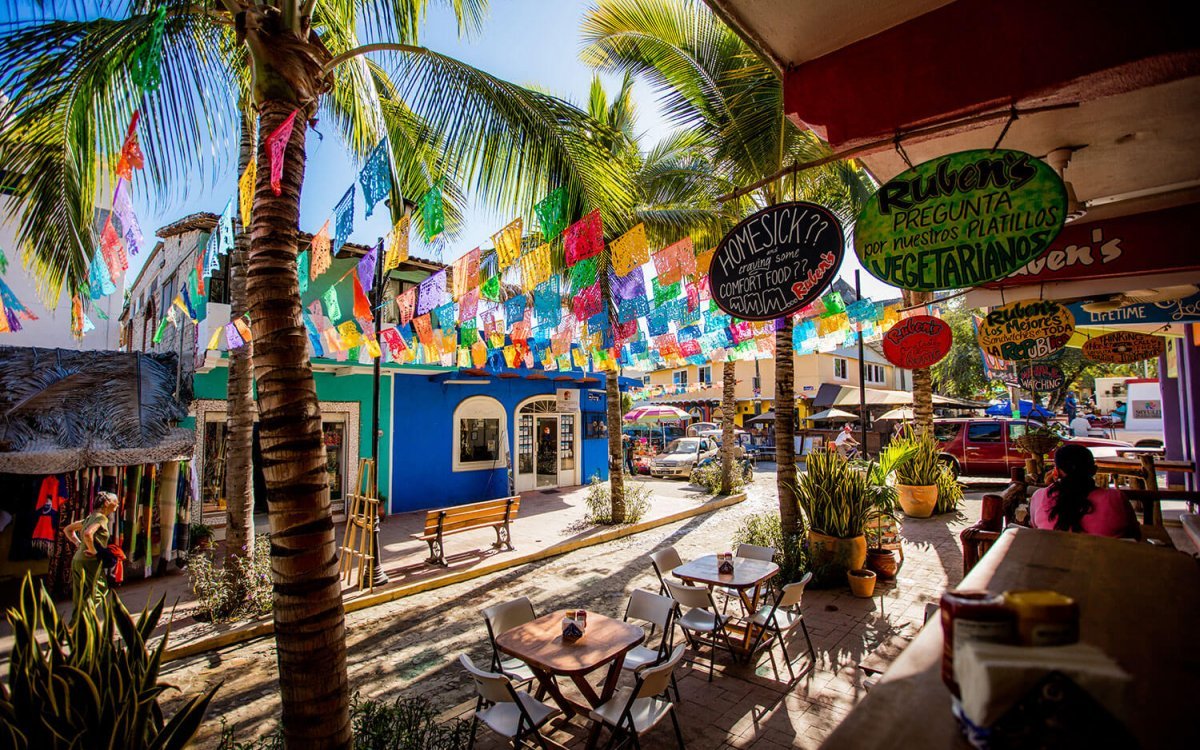
MÉXICO » News » October 2023 » UNWTO Recognizes Mexico’s Tourism Growth and Global Repositioning
Published by Publimetro México on October 1, 2023
Mexico has once again demonstrated its prowess in the global tourism industry, securing recognition from the United Nations World Tourism Organization (UNWTO). On September 27, during World Tourism Day celebrated in Riyadh, Saudi Arabia, UNWTO Secretary-General Zurab Pololikashvili commended Mexico for its outstanding achievements in tourism. Mexico now stands as the sixth-largest recipient of Tourism Foreign Direct Investment (FIDI) projects and leads in international tourist arrivals within Latin America.
Miguel Torruco Márques, Mexico’s Secretary of Tourism, expressed gratitude for the acknowledgment of Mexico’s efforts to attain these milestones. He attributed these accomplishments to President López Obrador’s strategies, which included not restricting international flights, implementing stringent biosafety protocols, and launching a comprehensive vaccination program—all without incurring debt.
UNWTO data reveals Mexico’s remarkable ascent from 17th to 9th place in foreign currency earnings from international visitors and from 40th to 28th in per capita spending on international tourism since 2018. Even amid the pandemic, Mexico showcased innovation by hosting the Digital Tourist Tianguis, maintaining open channels of communication with major source countries like the United States and Canada, and launching tailored campaigns for each of them.
Torruco Marqués highlighted Mexico’s ranking as the 6th country with the most RTDI (Research, Technology Development, and Innovation) projects between 2018 and 2022, boasting 105 projects, equivalent to 4.3% of the global total. In 2022 alone, Mexico secured a historic $4.245 billion in Foreign Direct Tourism Investment—a staggering 245% increase from 2019. During the current administration, the country has witnessed the largest investment in tourism support in six decades, with over 500,778 million pesos allocated from 2019 to 2023.
This boost has facilitated significant infrastructure improvements in transportation, including trains, airports, and highways, along with various urban development projects in tourist destinations across the nation. This collaborative approach has reinforced the sector’s infrastructure for the greater benefit of the tourism industry.
Torruco Marqués also emphasized the diversification of tourist activities across 270 destinations in Mexico, aligning with President López Obrador’s vision of making tourism a tool for social reconciliation. The government has revitalized the Magical Towns program through the Magical Color Routes initiative, which involves the painting of 140 facades and 20 artistic murals, enhancing the visual appeal of the 177 designated towns.
Among these, Mexcaltitán , Nayarit , reclaimed its title as a Magical Town through extensive remodeling efforts. Additionally, Puerto Balleto in Marías Islands transformed from a penitentiary center to an environmental education and ecotourism hub.
The Secretary of Tourism highlighted the modernization of the Green Angels, a roadside assistance service for tourists. After 20 years of neglect, a vehicle fleet renewal is underway, with plans to replace 40% of the units by the end of 2023 and 60% by the following year. Furthermore, the “Alfonso García González” Geointelligence Center (CGO) has been established, enabling real-time location tracking of tourists in need of assistance, along with a mobile application available for both iOS and Android platforms.
Mexico’s commitment to enhancing its tourism sector and its remarkable accomplishments in the face of global challenges have secured its place as a leader in the international tourism landscape.
Link to the article
More Recent News about Tourism in México
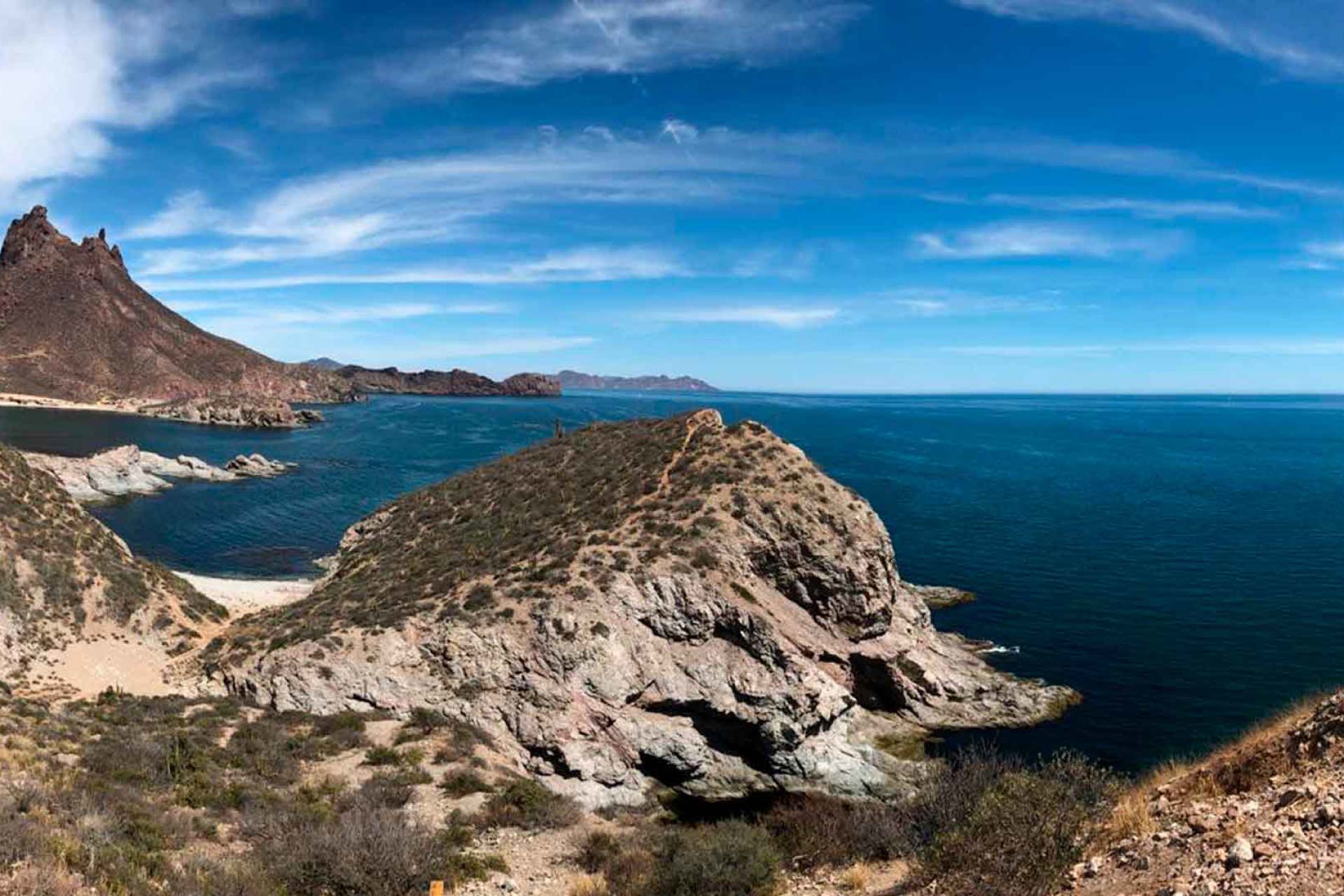
Sonora Leads Economic Growth Among Mexican Border States
Sonora has emerged as a leader among Mexico’s border states, achieving the highest economic growth in 2023, according to the Federation of National Chambers of Commerce, Services, and Tourism in Sonora (Fecanaco). Martín Zalazar Zazueta, the president of the chamber, hailed this as a significant accomplishment for the administration of Governor Alfonso Durazo Montaño.… Read More
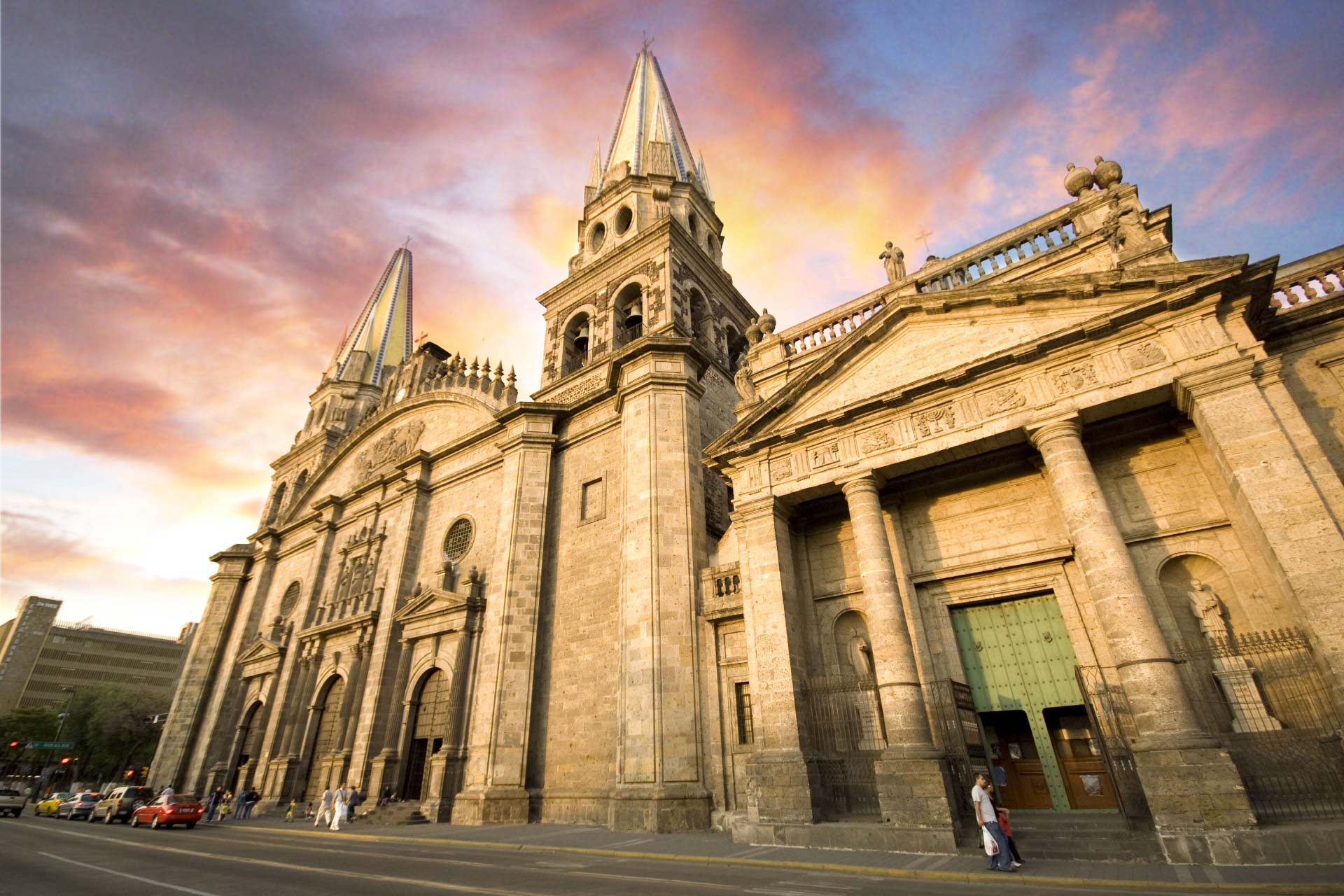
Analyzing Tourism’s Value Chain at National Research Congress
Last week, the 2024 Applied Tourism Research Congress was held at the Universidad Panamericana’s School of Hospitality in Guadalajara, focusing on the tourism value chain. The event saw a gathering of experts from across the academic and tourism sectors, featuring 60 presentations from researchers hailing from five countries: Chile, Colombia, El Salvador, Paraguay, and the Dominican Republic. These presentations were supported by various educational institutions and state tourism secretariats of Mexico.… Read More
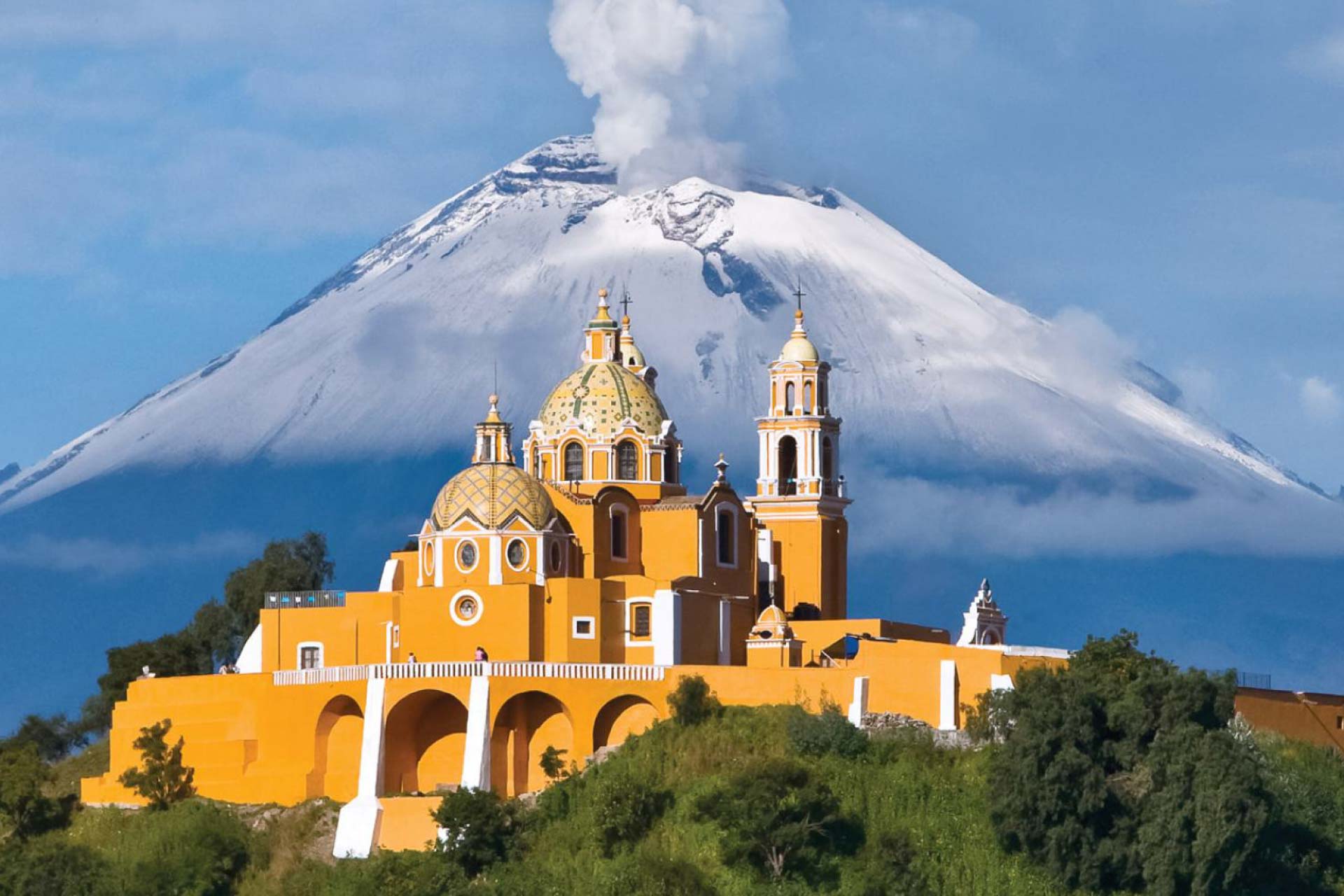
Nearshoring Boosts Hotel Investment Opportunities in Puebla
In Puebla, the phenomenon of nearshoring is anticipated to drive significant investments into the local hotel sector, according to Luis Javier Cué de la Fuente, president of the National Tourism Business Council (CNET), Puebla chapter. Cué de la Fuente emphasized the potential for this economic trend to foster new hotel developments and attract more international visitors to the region.… Read More
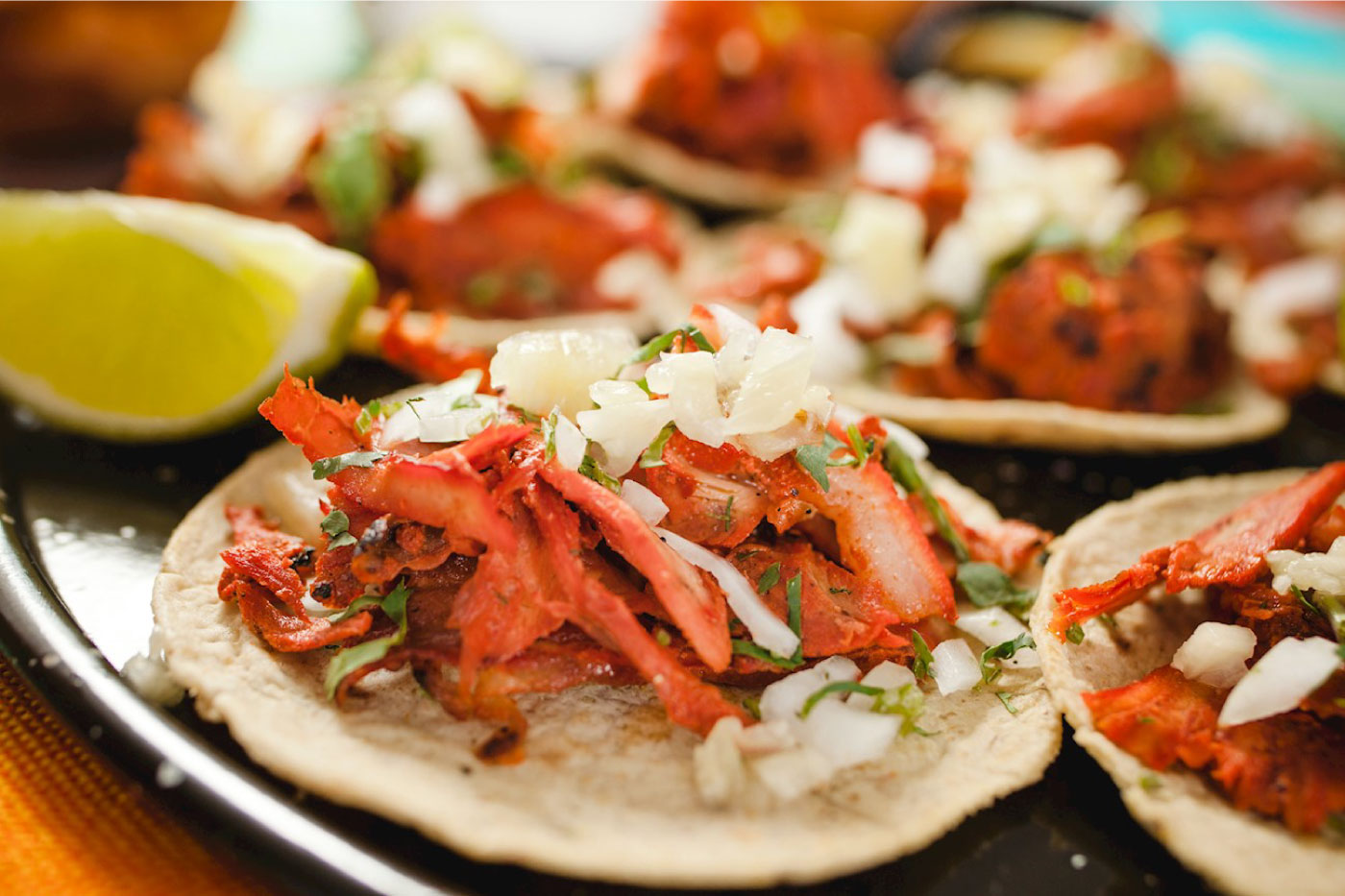
Mexico City: A Top Culinary Destination, Says Condé Nast Traveler
Condé Nast Traveler, the esteemed English magazine known for its luxurious spotlight on the world’s top tourist destinations, has recently honored Mexico City as one of the globe’s premier locales for culinary excellence. This accolade comes as part of the magazine’s annual Readers’ Choice Awards, where readers cast their votes on various categories, including the best global cuisines.… Read More
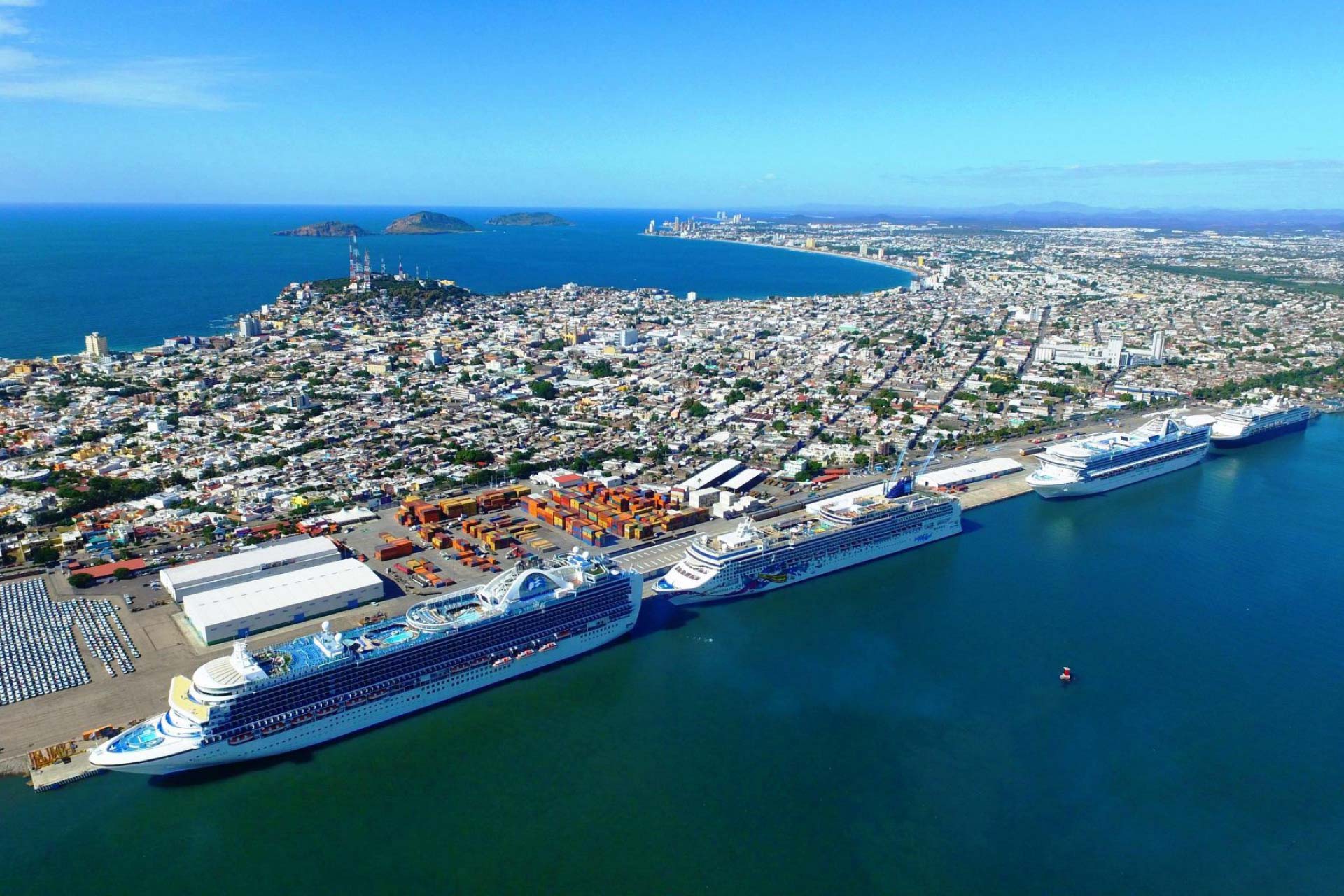
Mazatlán Aquarium Introduces the “Reflection Room”
The Mazatlán Aquarium has enhanced its visitor experience by inaugurating a new feature known as the Reflection Room. This addition is part of the celebrations marking the first anniversary of the Great Mazatlán Mar de Cortés Aquarium, a facility that has quickly become a key player in the local tourism and conservation efforts.… Read More
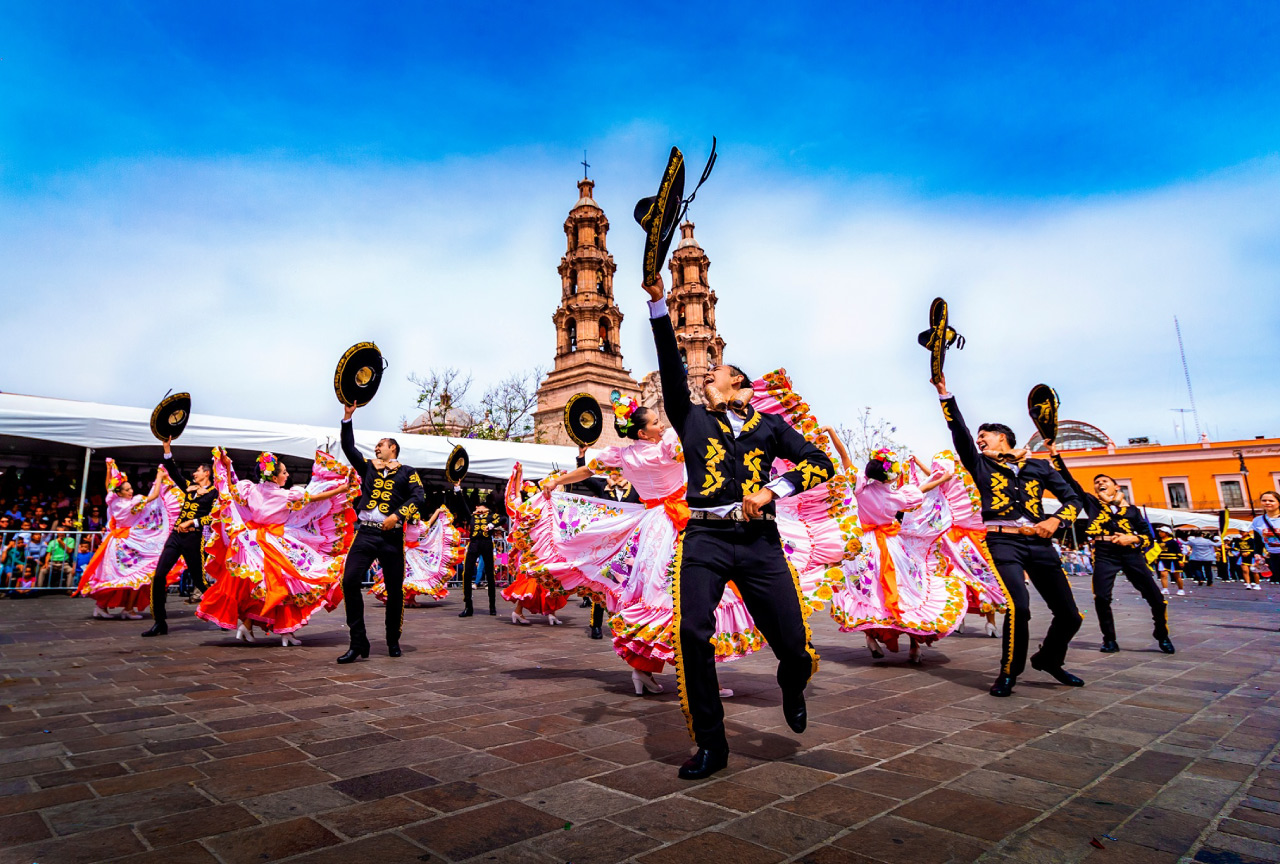
San Marcos Fair 2024: A Beacon of Culture and Economic Prosperity
The San Marcos National Fair in Aguascalientes, a storied event with nearly two centuries of history, is poised to set a new record in 2024 with anticipated economic benefits surpassing 10,000 million pesos. Known as one of Mexico’s oldest and most celebrated fairs, it has evolved into a significant regional economic catalyst.… Read More
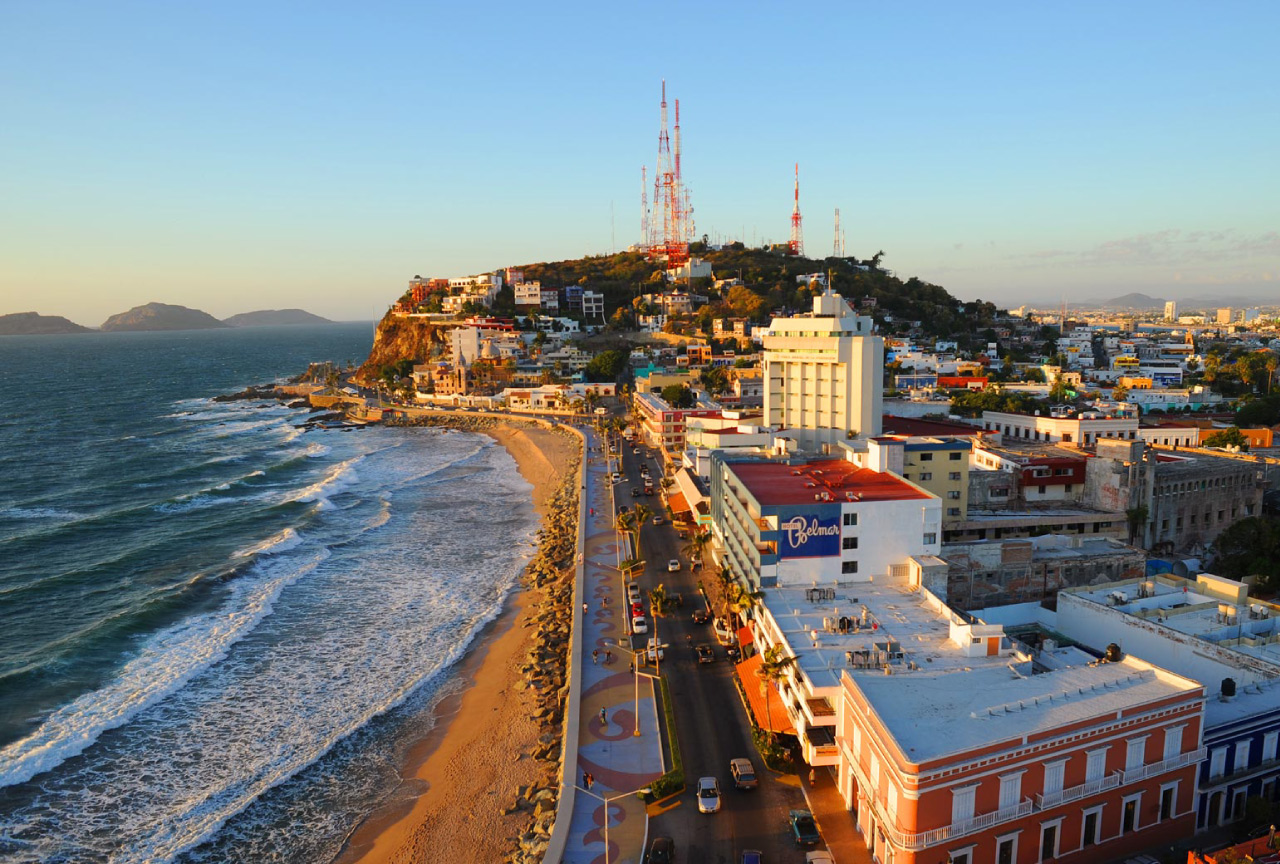
Mazatlán Expects a Tourism Boom During Motorcycle Week
Mazatlán is gearing up for a bustling first week of May, as city officials anticipate near-full hotel occupancy driven by several major events, including the much-anticipated Motorcycle Week from May 2 to 4. Ricardo Velarde Cárdenas, the office manager of the Ministry of Tourism in Sinaloa, revealed that alongside Motorcycle Week, the city will host a soccer event and the Mazatlán Cup, with activities further buoyed by the long weekend for Labor Day.… Read More
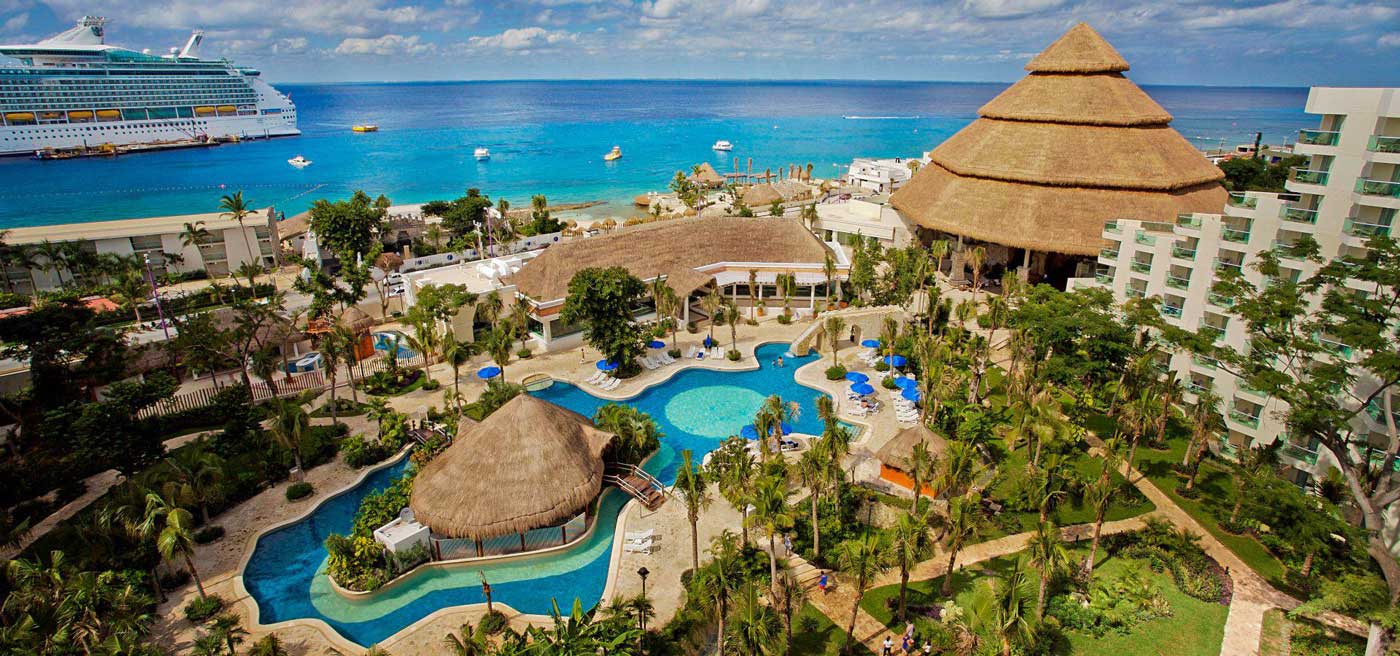
Cozumel’s Tourism Surge: A Paradise Expanded
Nestled in the Mexican Caribbean, the enchanting island of Cozumel is rapidly becoming a top choice for travelers. With a steady increase in the number of flights, cruise arrivals, and burgeoning hotel bookings, Cozumel is establishing itself as an essential destination for nature enthusiasts and adventure seekers alike.… Read More
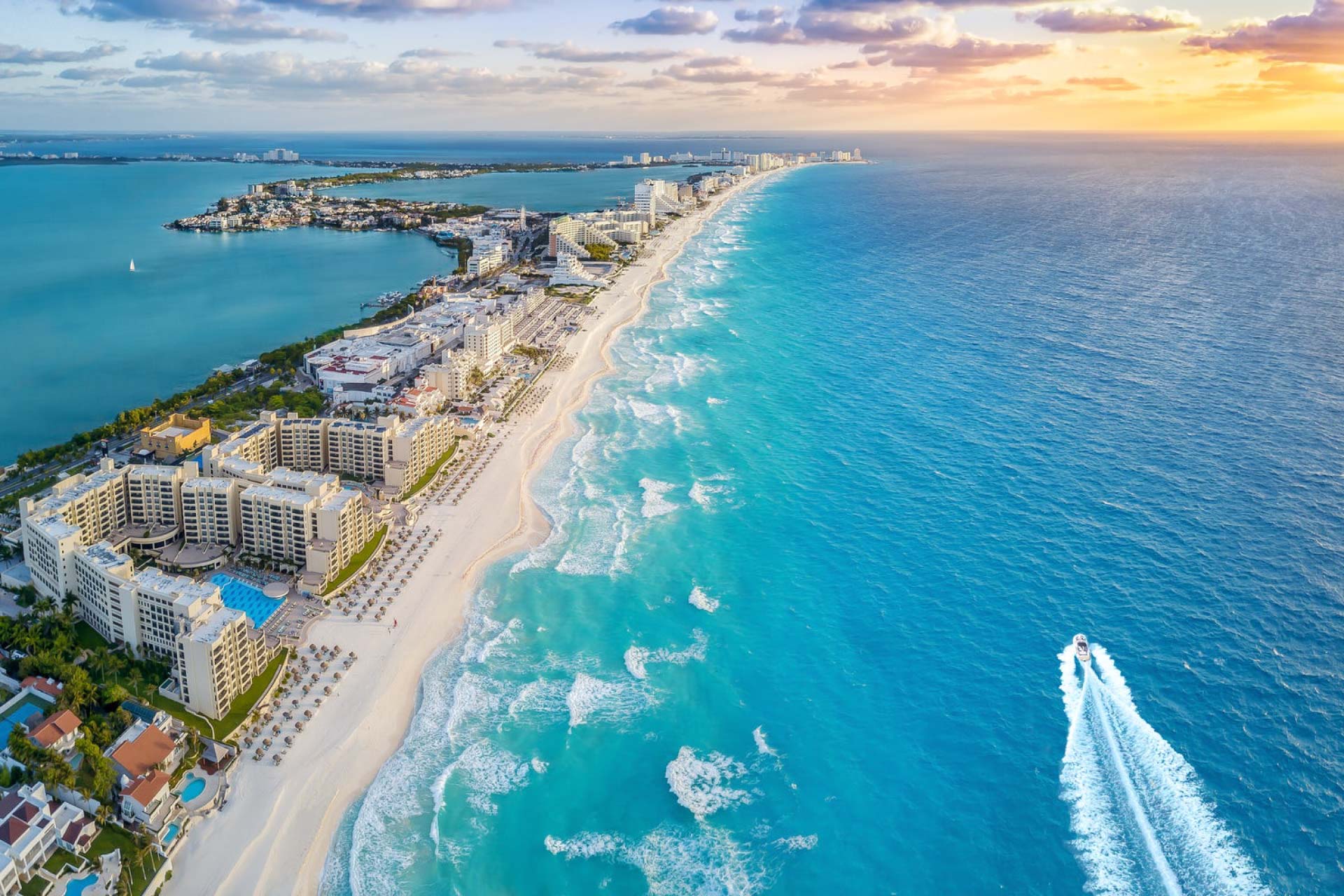
UN Hosts Cultural and Tourism Forum at Xcaret with a Focus on Film
The United Nations Tourism Organization recently hosted an influential forum titled “Culture and Tourism: A Film Relationship” at the Xcaret hotel complex. This event aimed to explore the symbiotic relationship between the tourism and cinema industries. The forum was a highlight of the broader 2024 edition of the Platino Ibero-American Cinema Awards, a significant event for the Spanish-speaking audiovisual sector, attracting a variety of producers, actors, and film-related professionals.… Read More
Boost in Sonora’s Guided Tours: A 25% Increase Fueled by New Flight Routes
The tourism sector in Sonora has experienced a significant boost, with a 25% increase in guided tour sales this year compared to last. Julio Rascón, the national and state president of the Tour Operators, attributes this growth to enhanced promotional efforts and a surge in demand from travelers from various Mexican states, including Bajío, Zacatecas, San Luis Potosí, Aguascalientes, Yucatán, and Veracruz.… Read More
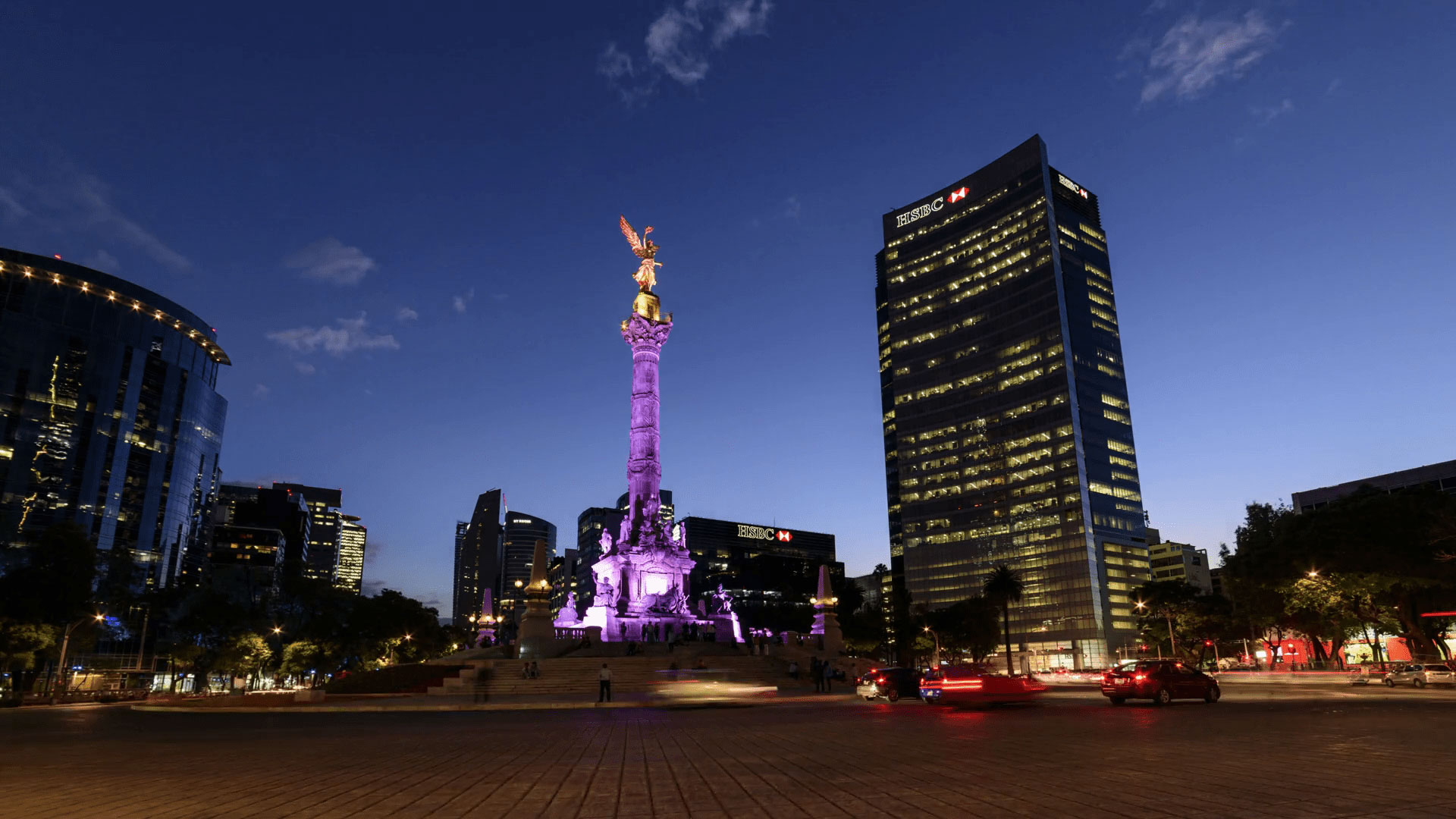
Madrid Celebrates Hispanic Heritage with Mexico as Guest Country
Madrid is set to showcase its rich cultural tapestry at the fourth annual Festival of Hispanic Heritage this October, with Mexico featured as the guest country. The announcement was made by Isabel Díaz Ayuso, president of the Community of Madrid, who emphasized the festival’s role in connecting with distant markets and celebrating the diverse origins of Madrid’s residents.… Read More
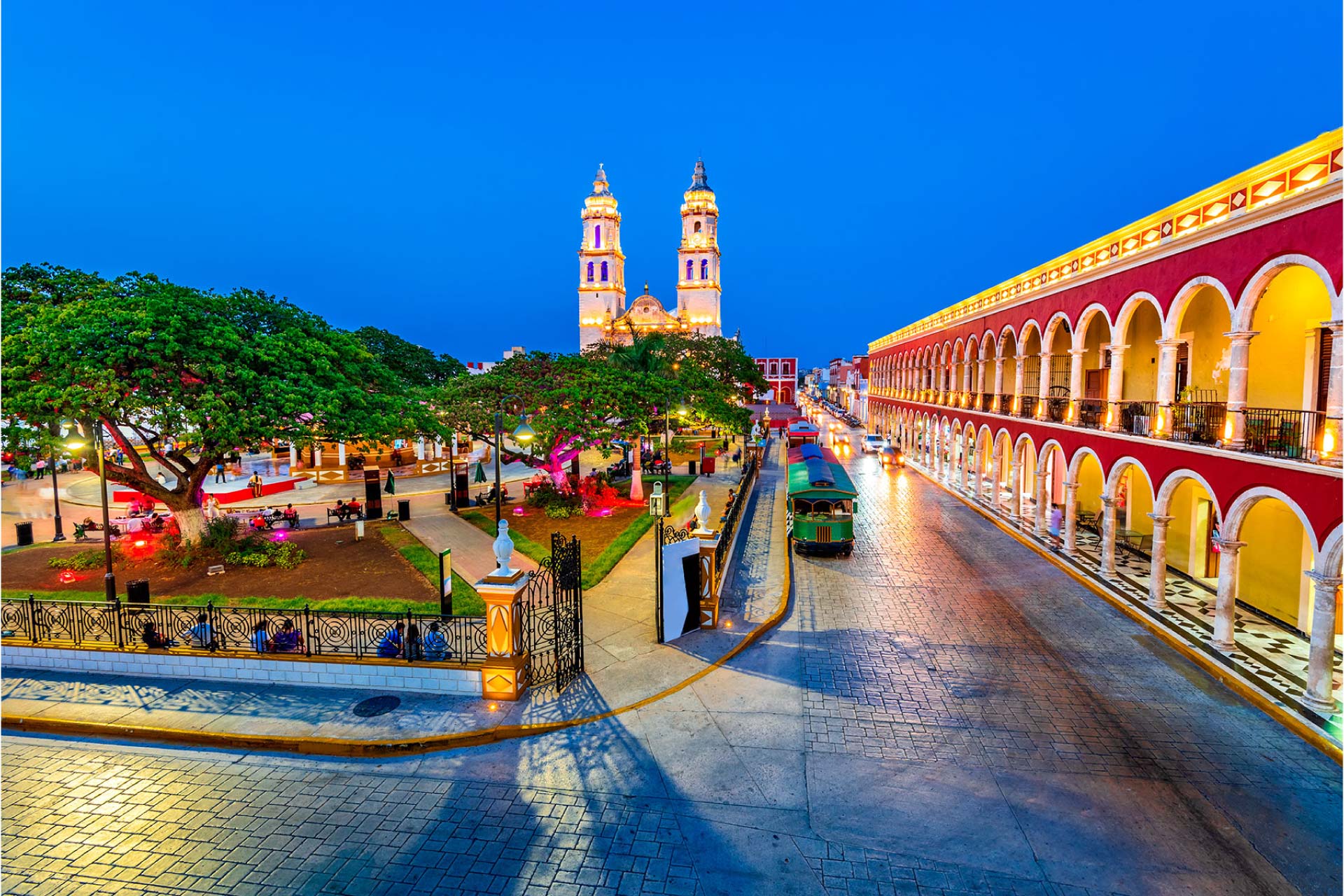
New Leadership in Campeche’s Restaurant Association Aims to Boost Tourism
In a recent development aimed at promoting tourism in Campeche, Francisco Estrada Gómez, the president of the Tourism Business Council of Shops on 59th Street and traditional neighborhoods, introduced the new board of directors for the association. This strategic move underscores the ongoing efforts to enhance the region’s attractiveness to tourists and provide a boost to local businesses.… Read More
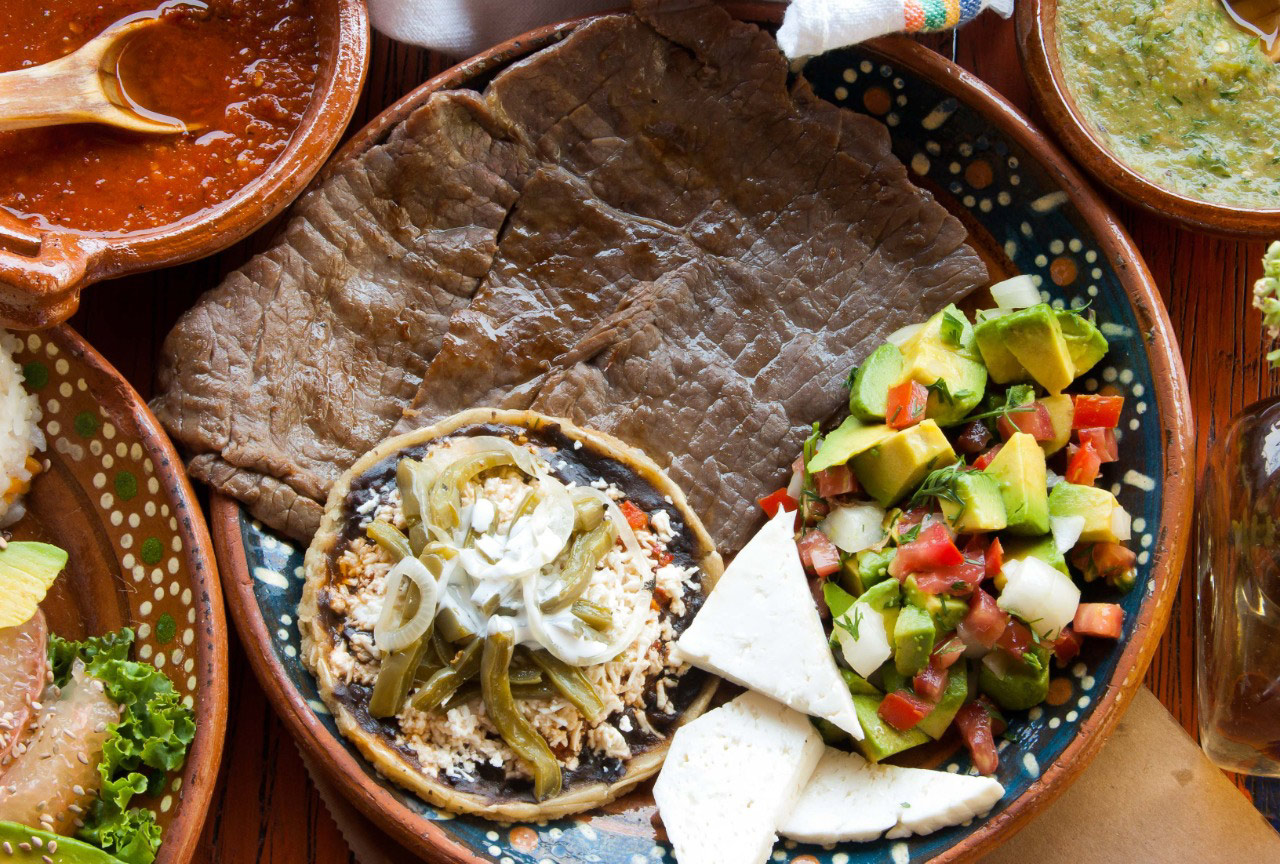
Morelos Marks 155 Years of Statehood with Celebrations
Morelos, one of Mexico’s vibrant states, recently celebrated a significant milestone—its 155th anniversary as a federative entity. The state was officially established in 1869 by then-President Benito Juárez García, who organized it into the districts of Cuernavaca, Cuautla, Jonacatepec, Tetecala, and Yautepec. These areas, once part of the State of Mexico, came together to form what is now known as Morelos.… Read More
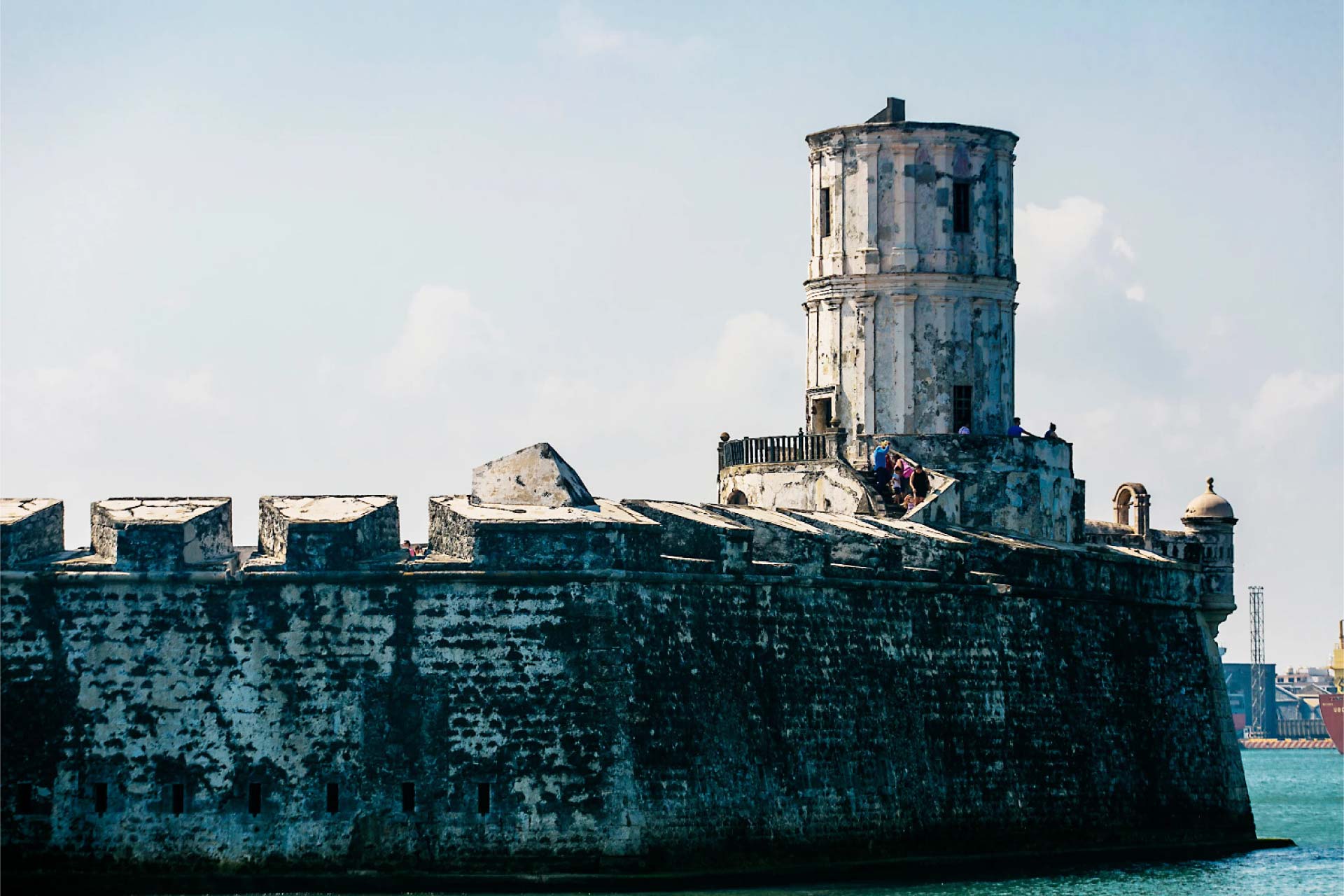
Exploring Veracruz’s Hidden Historical Gems
Veracruz is widely known for its scenic beaches attracting countless tourists yearning for sun and sand. However, the state also offers a rich tapestry of historical tourism that many are yet to discover. Veracruz, comprised of 212 municipalities, houses several lesser-known sites that are not only steeped in history but are also visually stunning.… Read More
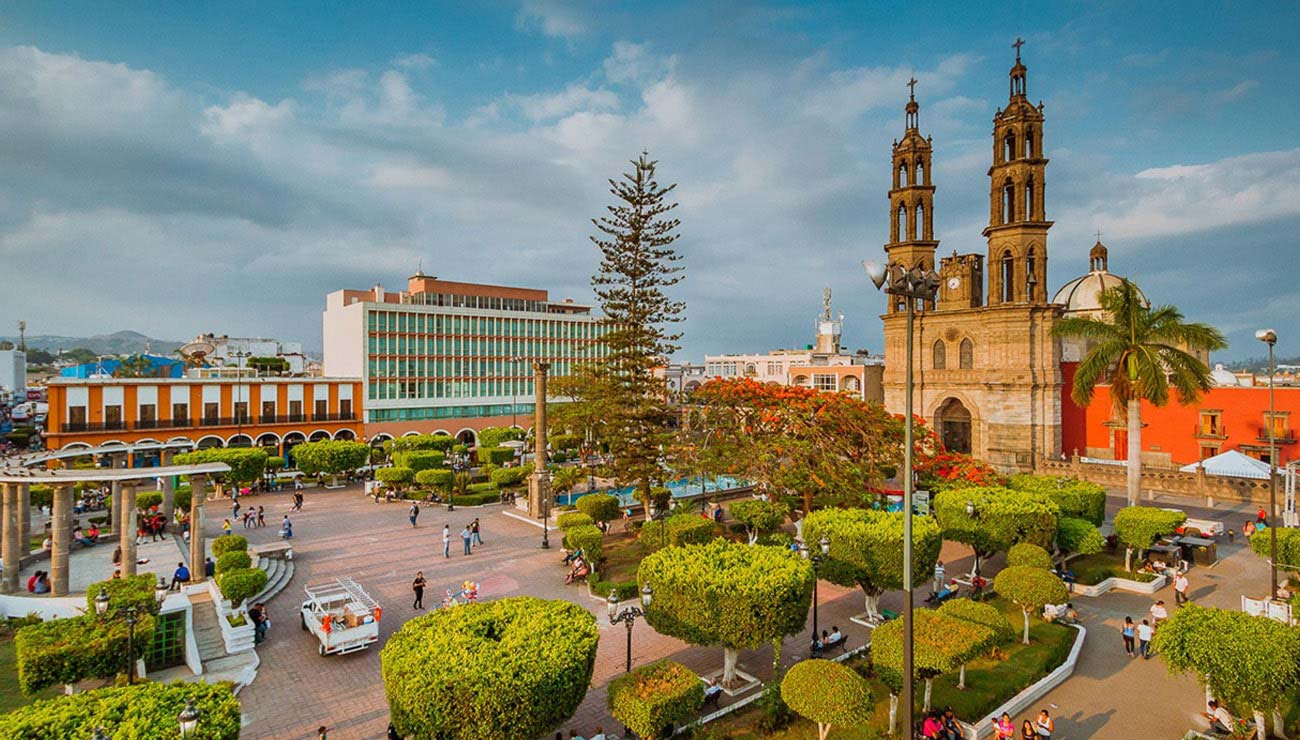
New Direct Flight Connects Tepic to Los Angeles
The Ministry of Infrastructure, Communications and Transportation (SICT) recently announced the inauguration of a new direct flight service linking Tepic International Airport in Nayarit, Mexico, to Los Angeles, California. This service is set to commence on April 16, marking a significant step in enhancing the airport’s international connections.… Read More
Quintana Roo Welcomes Brazilian Tourists with New Electronic Visa
Quintana Roo is set to welcome Brazilian tourists with a new electronic visa starting in May. This initiative aims to boost tourism by simplifying the entry process for travelers from Brazil, who can now more easily explore the region’s 12 captivating destinations.… Read More
Tourist attractions in México

- Capital Cities
Folklore, gastronomy, literary culture, art and exhibitions, is what you will find in the capitals of the states of Mexico. To the north, colonial Mexico, Puebla, Guadalajara, Guanajuato, the Sonoran desert and the California peninsula. To the east Veracruz and the gulf. To the west Acapulco, Oaxaca and Tuxtla Gutiérrez. And to the south the Riviera Maya and the pyramids of Chichén-Itzá, Tulúm and Cobá in Yucatán, Palenque in Chiapas, the cenotes, and the Central American jungles.… Read More

- Ecotourism and Adventure
Mexico is one of the best countries for Ecotourism as it has a great variety of flora and fauna, as well as a large number of refuges for extraordinary species. You can enjoy recreational activities of appreciation and knowledge of nature through contact with it, such as: stargazing, observation of natural attractions, wildlife and bird watching. Throughout México there are more than 176 protected natural areas, 5 of them considered by UNESCO as Natural Heritage of Humanity. Just for this and much more, we believe that Mexico is a Paradise for Ecotourism.… Read More

States Of Mexico
Mexico has an incredible diversity of landscapes, where the beauty of its beaches, internationally recognized, stands out. In its vast territory of coasts, there are beaches of unparalleled beauty, and colorful landscapes. A large network of first-class hotels and tourist services is available to visitors to these beaches. Mexico is also mystical places, dotted with archaeological testimonies inherited from its original inhabitants. Monuments made by the Mayas, Aztecs and Toltecs are located in magical landscapes, like lighthouses in an ocean of natural beauty. They offer visitors buildings that tell their history, and museums that collect their cultural heritage. And that keep alive ancestral traditions, in ceremonies and festivals, where you can enjoy cultural activities and entertainment.… Read More

- Traditions in Mexico
It is practically impossible to make a meticulous, and above all, accurate selection of the places to visit in Mexico. Each place that our country houses is unique and beautiful in its own way. Mexico, with its nearly 2 million km², has a large number of scenarios to offer, as well as endless activities to do. Do not lose your way and enter the places to visit in Mexico. In Mexico, apart from the beaches and its famous archaeological sites, there are many other really interesting sites and activities that you should know. In the surroundings of the main cities you will find places full of culture and tradition, where you can spend relaxing, interesting and fun vacations. On your trip through Mexico you cannot stop obtaining souvenirs, the crafts that are made here are of the highest quality and recognized worldwide. A shopping tour cannot be missed.… Read More

On the Beaches of Mexico you can immerse yourself in the intense blue ocean of the Pacific bays, sunbathe on the shore of the warm and transparent waves of the Caribbean Sea in Quintana Roo or even rest on the beautiful coasts of the Gulf of Mexico. Mexican beaches hide wonderful secrets for the traveler. By visiting them, in addition to enjoying the excellent climate and water activities, you can discover splendid archaeological sites and interesting colonial cities without traveling long distances.… Read More

- Magical Towns
A Magical Town is a place with symbols and legends, towns with history that in many cases have been the scene of transcendent events for our country, they are places that show the national identity in each of its corners, with a magic that emanates from its attractions ; visiting them is an opportunity to discover the charm of Mexico. The Magical Towns Program contributes to revalue a set of populations in the country that have always been in the collective imagination of the nation and that represent fresh and varied alternatives for national and foreign visitors. A town that through time and in the face of modernity, has conserved, valued and defended its historical, cultural and natural heritage; and manifests it in various expressions through its tangible and intangible heritage. A Magical Town is a town that has unique, symbolic attributes, authentic stories, transcendent events, everyday life, which means a great opportunity for tourist use, taking into account the motivations and needs of travelers.… Read More

- Archaeological Sites
The Archaeological Zones are the cultural past of every Mexican. You will be amazed at the ambient, nature and the environment that surrounds them. Climbing to the top or being around it will take us back in time to admire every detail. México is a country of culture and traditions, many of which we have inherited from the pre-Hispanic inhabitants of this vast territory, although it is true that there were more settlements in the central and southern part of the country, it is also possible to find some archaeological remains in the north. … Read More

The Gastronomy of Mexico has a great diversity of typical dishes, which is why it was recognized by UNESCO as Intangible Heritage of Humanity. The basic and representative ingredients of Mexican dishes are: corn, coriander, chili, beans, piloncillo, nopal and tomato. Mexican cuisine is also characterized by its sauces, which serve as an accompaniment to traditional dishes, prepared based on spices.… Read More

Leave a Reply Cancel reply
Your email address will not be published. Required fields are marked *
Save my name, email, and website in this browser for the next time I comment.
- States of Mexico
- Animal Rescue in Mexico
Our Categories
- Entrepreneurs
- Oil & Gas
- Finance & Fintech
- Infrastructure
- Professional Services
- E-Commerce & Retail
- Agribusiness & Food
- Logistics & Mobility
- Trade & Investment
- Policy & Economy
- Cybersecurity
- AI, Cloud & Data

The World Tourism Organization Shows Interest in Mexico

In an effort to reactivate Mexico´s tourism industry through the promotion of investments and education programs, President López Obrador welcomed Zurab Pololikashvili, Secretary of the World Tourism Organization (OMT) to discuss the tourism industry in Mexico.
"I welcomed the Secretary of the World Tourism Organization, Zurab Pololikashvili, and our Secretary of Tourism Miguel Torruco. He gave me recognition for the tourism policy we implemented during the pandemic. I thanked him on behalf of all of us," the president said on his Twitter account.
Pololikashvili first arrived to Mexico along with members of the Organization of American States (OAS), to participate in the Fourth Special Meeting of the Inter-American Committee on Tourism (CITUR), where they discussed issues related to the reactivation of tourism, through the promotion of investments and education for growth. Torruco expressed his wishes to improve tourism standards in Mexico, "We are doing this with the purpose of sharing the work carried out by the governments of the Inter-American System of the Organization of American States (OAS) for the safe reactivation of the mobility of international travelers, and to bring the agreements to a broader table of analysis with global reach and taking into account the particularities of this region of the world.”
Some of the important points to work on the Fourth Special Meeting of the Inter-American Committee on Tourism are presented here:
- Facilitate internal mobility within the country, while taking care of sanitary measures and avoiding discrimination.
- Homogenize bio-sanitary protocols with other countries to guarantee people´s health.
- To ally with the private sector and implement technology in order to increase tourism to different areas.
- Accelerate the vaccination process throughout the country.
Initiatives to improve sanitary protocols in internal mobility of the country, such as “Viaja Seguro” Initiative from CNET and INTERprotección have already been presented. As reported by Mexico Business News , The National Tourism Business Council (CNET) created the initiative "Viaja Seguro" (VIGO) in alliance with INTERprotección, a travel road insurance company aiming to reactivate the travel segment in Mexico that highlights the importance of having travel insurance assistance in case of any event related to the COVID-19 pandemic.
The tourism sector as a whole is set to have a strong recovery after the pandemic. The World Travel and Tourism Council (WTTC) recently announced a US$2.5 billion investment in tourism infrastructure in Mexico. Yucatán is also receiving investment from other sources. Mauricio Vila Dosal, Governor of the state, announced an investment of over US$73 million in tourism projects, reported MBN .
- zurab pololikashvili
- Secretary of the World Tourism Organization
- Miguel Torruco
You May Like

Most popular

Video You May Like

© 2022 Mexicobusiness.News. A Mexico Business Company. All Rights Reserved.
- Secretaría de Relaciones Exteriores
Tourism and Foreign Ministries strengthen Mexico's tourism promotion strategy abroad
Tourism-foreign affairs joint press release.
Secretaría de Relaciones Exteriores | 28 de noviembre de 2023 | Comunicado
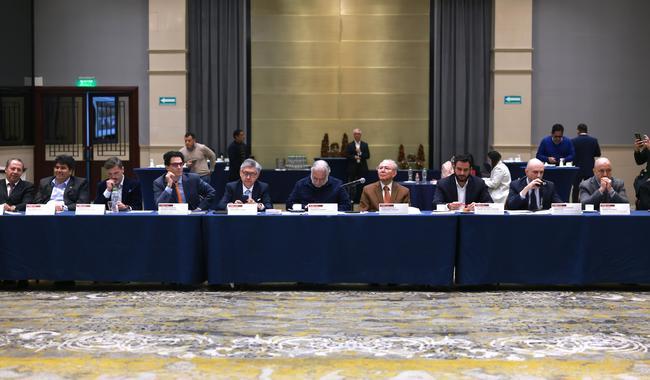
- Tourism Secretary Miguel Torruco and the Undersecretary for Multilateral Affairs and Human Rights at the Foreign Ministry, Joel Hernández, presented the Permanent Tourism Observatory, saying it would innovate Mexico's tourism promotion strategy abroad.
- The Observatory is a channel of communication with 169 Mexican representations abroad that is available to state tourism ministries, chambers and associations, said Secretary Torruco.
- Undersecretary Hernández underscored the need to promote Mexico as a diverse country, and reiterated the Foreign Ministry’s readiness to continue promoting Mexico’s tourism industry abroad.
Mexican Tourism Secretary Miguel Torruco and the Undersecretary for Multilateral Affairs and Human Rights at the Foreign Ministry, Joel Hernández, presented the Permanent Tourism Observatory, aimed at innovating Mexico’s tourism promotion strategy, promote Mexico's image abroad and diversify marketing strategies for Mexico’s tourism products and services.
At a meeting with state tourism secretaries and presidents of the main tourism chambers and associations, the two officials said that the Observatory is an instrument for coordinating Mexico’s tourism policy that grew out of the Tourism Diplomacy Council (CDT) and incorporates the lessons learned from the pandemic and the reactivation of Mexico’s tourism sector.
The Permanent Tourism Observatory is a channel of communication with 169 Mexican representations abroad, 85 embassies, 73 consulates and 3 liaison offices around the world. It is available to the state tourism ministries, and has the invaluable support of the Association of Tourism Secretaries of Mexico (Asetur), headed by Nayarit Tourism Secretary Juan Enrique Suárez del Real, and the country’s main tourism chambers and associations.
Secretary Torruco said that the Tourism and Foreign Ministries had joined forces to promote Mexico as a tourist destination in the international market following the president’s instructions to streamline the structure of the Mexican government.
To this end, in 2019, the ministries signed an agreement for a joint work plan, where the Tourism Ministry defines and gives content to Mexico’s tourism policy and the Foreign Ministry helps promote Mexico in international tourism markets.
Embassy and consular personnel were trained in managing and developing Mexico’s tourism promotion, and the CDT was created to implement strategies to promote Mexico internationally.
Given the new challenges to the tourism industry, which is constantly evolving, Mexico’s response must also evolve, launching new projects that allow our tourism industry to continue advancing, in line with President López Obrador's philosophy of making tourism a tool for social reconciliation.
Secretary Torruco concluded by saying, "I would like to thank the Foreign Ministry, headed by Alicia Bárcena, for its prompt and expeditious actions to work in coordination with the Tourism Ministry in this endeavor.”
Undersecretary Joel Hernández acknowledged the valuable work of the CDT board members and Tourism Secretary Torruco in positioning and strengthening Mexico's tourism industry.
He highlighted the need to promote Mexico as a diverse country, rich in natural and cultural resources, with honest and warm people and a privileged geopolitical position. He stressed the important role of the Matias Romero Institute (IMR) in the professionalization and training of Mexican Foreign Service personnel in tourism promotion, and of the Institute for Mexicans Abroad (IME) for capitalizing on tourism and investment.
"The two ministries have joined forces with the states, tour operators, and the network of embassies and consulates to provide training and publicize these initiatives abroad. We reiterate the readiness of the Foreign Ministry to continue promoting Mexico's tourism abroad," he said.
Participating in the event on behalf of the Tourism Ministry were Tourism Undersecretary Humberto Hernández Haddad and Emmanuel Romain Ernest Rey, Director General of International Affairs and Promotion. The Foreign Ministry was represented by Juan Patricio Riveroll Mendoza, Executive Director of Cultural and Tourism Diplomacy; IMR Director General María Teresa Mercado; Luis Gutiérrez Reyes, Head of the Institute for Mexicans Abroad; and other officials.
Also participating were Asetur President and Nayarit Tourism Secretary Juan Enrique Suárez del Real; and the Tourism Secretaries of Baja California, Miguel Aguiñiga Rodríguez; Nuevo León, Maricarmen Martínez Villareal; Guerrero, Santos Ramírez Cuevas; Baja California Sur, Rosa Maribel Collins Sánchez; Sonora, Roberto Gradillas Pineda; Sinaloa, Estrella Palacios Domínguez; Hidalgo, Elizabeth Quintanar Gómez; Michoacán, Roberto Enrique Monroy García; Tamaulipas, Benjamín Hernández Rodríguez; Morelos, Julieta Goldzwelg Cornejo; Guanajuato, Juan José Álvarez Brunel; Yucatán, Michelle Fridman Hirsch; Chiapas, Katyna de la Vega Grajales; Campeche, Mauricio Arceo Piña; Quintana Roo, Bernardo Cueto Riestra; Mexico City, Nathalie Veronique Desplas Puel; Oaxaca, Saymi Pineda Velasco; Aguascalientes, Gloria María Romo Cuesta; Zacatecas, Le Roy Barragán Ocampo; Veracruz, Ivan Francisco Martínez Olvera; Jalisco, Claudia Vanessa Pérez Lamas; San Luis Potosí, Juan Carlos Machinena Morales; and Querétaro, Adriana Vega Vázquez Mellado; and the Tourism Undersecretary of Colima, Jorge Padilla Castillo.
The business sector was represented by the presidents of the National Association of Hotel Chains (ANCH), Luis Barrios Sánchez; the Mexican Association of Travel Agencies (AMAV), Felipe Cervantes Vega; the Mexican Association of Travel Agencies in Mexico City (AMAV CDMX), José Julián Arroyo Corvera; the National Council of Tourism Services Exporters (Conexstur), Víctor Manuel Enríquez; and the Association of Progressive Entrepreneurs, Jean Paul Pelletier; the Director General of the Quintana Roo Tourism Promotion Council, Javier Aranda Pedrero; the president of Viajes Bojórquez, Armando Bojórquez Patrón; the Director General of the Los Cabos Tourism Promotion Trust, Rodrigo Esponda Cascajares; the president of the Mexican Council of Meetings Industry (COMIR), Michel Wohlmuth; and the president of Alchemia Communication Strategy, Lourdes Berho, among other representatives of the leading tourism chambers and associations.
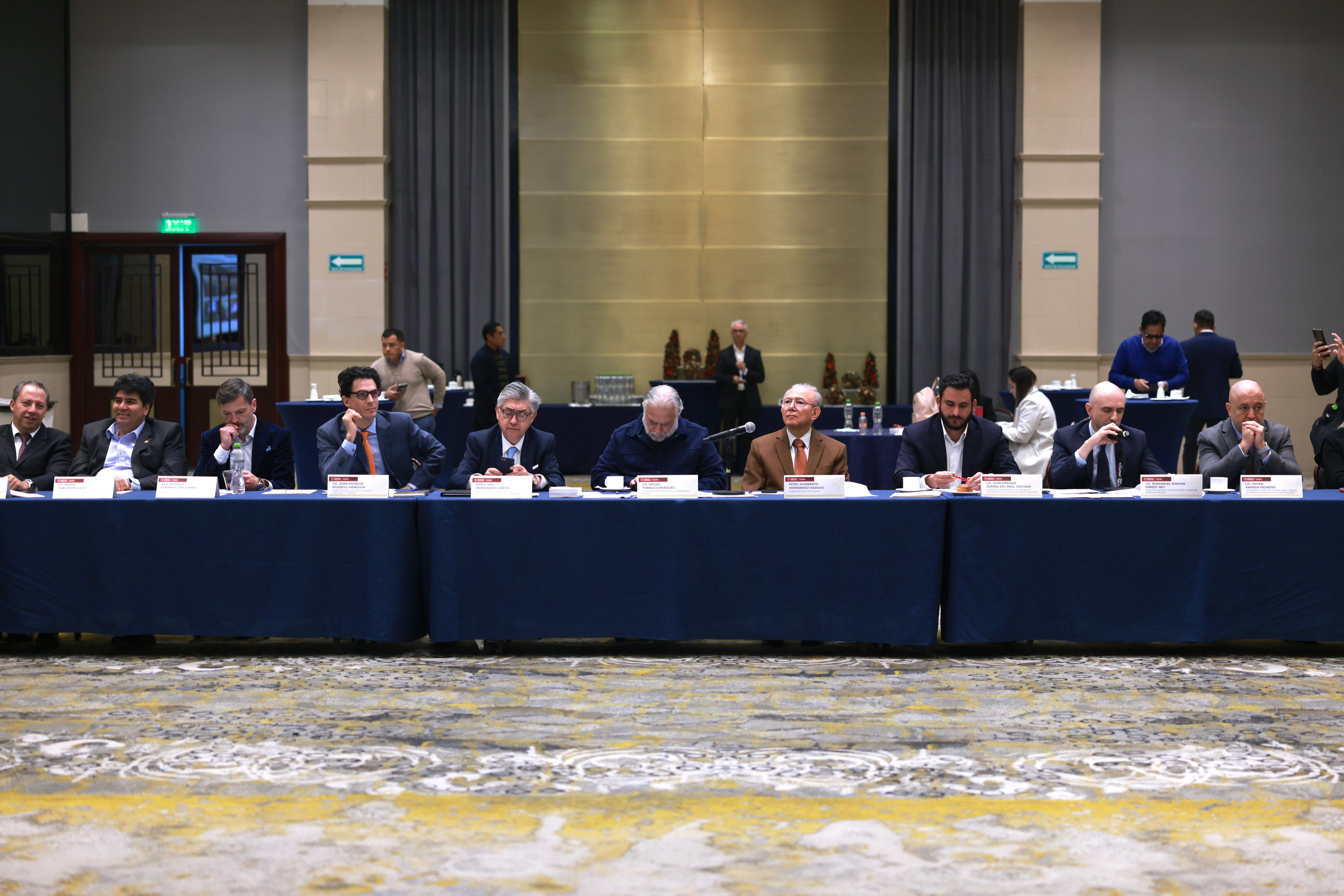
Puedes seleccionar más de uno.
Puedes seleccionar más de una opción.
Gracias por tu opinión.
La legalidad, veracidad y la calidad de la información es estricta responsabilidad de la dependencia, entidad o empresa productiva del Estado que la proporcionó en virtud de sus atribuciones y/o facultades normativas.

UNWTO in Mexico to Build on Historic Support for Tourism

Meeting with President Andrés Manuel López Obrador , Secretary-General Zurab Pololikashvili commended his leadership from the very start of the pandemic. This included ensuring that Mexico continued to welcome international flights, safely and responsibly, and providing practical assistance for businesses and workers across the broad tourism sector. President López Obrador was officially recognized by UNWTO for his support of tourism and for leading by example at this critical time.
The UNWTO delegation also met with Mexico’s Secretary for Tourism Miguel Torruco Marqués to discuss the restart of tourism both in Mexico and across the wider region. At the National Palace, Secretary-General Pololikashvili accepted the government’s invitation to the official opening of the new “General Felipe Ángeles” International Airport , currently scheduled for March 2022.
Mexico has led the way in supporting tourism, politically and practically, through an unprecedented crisis
Mr Pololikashvili says: “Mexico has led the way in supporting tourism, politically and practically, through an unprecedented crisis. Under the leadership of President López Obrador, it is ready to restart tourism and put into action the commitments of UNWTO’s Punta Cana Declaration for inclusive and sustainable tourism.”
Guiding regional recovery
The official visit to Mexico forms part of UNWTO’s wider support for its Member States in the Americas. Mexico was among the states to attend an extraordinary Ministerial meeting of the Americas. Here, with the signing of the Punta Cana Declaration, the region’s tourism leaders committed to placing inclusivity at the heart of tourism’s restart, ensuring that the sector delivers benefits and opportunities for all.
This shared commitment was also in evidence as UNWTO’s Regional Commission for the Americas met last week (24 June). Hosted by Jamaica, and chaired by the country’s Minister of Tourism Edmund Bartlett, the meeting highlighted the unprecedented political support now enjoyed by the sector, with 23 of the 24 regional Members represented , alongside six international and regional organizations. Discussions centred on the practical steps UNWTO is taking to guide the restart of tourism, and participants praised the tourism intelligence generated by UNWTO as “one of several laudable initiatives to assist Member States to navigate the choppy waters of pandemic and post-pandemic tourism slump and recovery”.
Elections and nominations
The meeting concluded with elections and nominations for positions within several UNWTO bodies, again showing a shared determination to move ahead even in challenging times. Argentina, Brazil and the Dominican Republic were nominated to represent the Americas in the UNWTO Executive Council. Paraguay and Uruguay were nominated as Vice-Presidents of the General Assembly, and Guatemala and Jamaica were nominated to serve as members of the Credentials Committee. Paraguay was also nominated to serve as Chair of the UNWTO Commission for the Americas, while Uruguay and Barbados were nominated for its two Vice-Chair positions. Uruguay was elected to host the next UNWTO Commission for the Americas.
Spectacular Baselworld is Back
WTTC Economic Report Reveals COVID-19’s Dramatic Impact on Tourism
Welcome, Login to your account.
Recover your password.
A password will be e-mailed to you.
Embajada de México en Reino Unido
MEXICO’S RISE TO SIXTH MOST VISITED COUNTRY IN THE WORLD CONFIRMED BY UNWTO

• The United Nations World Tourism Organization (UNWTO) published the 2017 ranking on the most visited countries in the world and the countries with most international receipts.
• Three months prior to the end of Mexico’s current administration, the UNWTO, announced on its website that Mexico climbed two places, from 8th, welcoming 35.1 million international visitors in 2016, to 6th, with 39.3 million in 2017.
MEXICO CITY, Mexico, August 27, 2017. – The United Nations World Tourism Organization (UNWTO) released its ‘UNWTO Tourism Highlights 2018 Edition’, which includes the 2017 global ranking. The document confirms that Mexico rose to sixth place in the ranking of most visited countries after welcoming 39.3 million visitors in 2017.
Three months prior to the end of Mexico’s current administration, the UNWTO, announced on its website that Mexico climbed two places, from 8th, welcoming 35.1 million international visitors in 2016, to 6th, with 39.3 million in 2017, representing a 12% increase over the previous year.
The document, ‘UNWTO Tourism Highlights 2018 Edition’, states that the most visited country in the world, based on international tourist arrivals, is France with 86.9 million followed by Spain with 81.8 million. The U.S. placed third with 75.9 million, while China came in fourth with 60.7 million and Italy in fifth with 58.3 million. As previously mentioned, Mexico, came in sixth with 39.3 million international tourists, followed by the U.K. with 37.7 million, Turkey with 37.6 million, Germany with 37.5 million and closing out the Top 10 is Thailand with 35.4 million international tourists.
The UNWTO also shared that the U.S. retained its top position in the world ranking based on International Tourism Receipts, with US$210.7 billion, followed by Spain with US$68 billion and France with US$60.7 billion. Once more, Thailand places fourth with US$57.5 billion, followed by the U.K. in fifth with US$51.2 billion, Italy in sixth with US$44.2 billion, and Australia in seventh place with US$41.7 billion. Germany remains in eight place with US$39.8 billion, followed by Macao (China) with US$35.6 billion and Japan with US$34.1 billion.
According to the international organization, these impressive results in 2017 were driven by the sustained demand for travel to countries in all regions of the world, and by the strong recovery experienced by the destinations that have faced security challenges in recent years.
The UNWTO emphasized that the increase in arrivals resulted in a significant increase in total exports from international tourism, estimated at US$1.6 trillion in 2017, and thus ensuring that international tourism is the third most important export category in the world.
Sectur. Avenida Presidente Masaryk 172, colonia Bosques de Chapultepec, delegación Miguel Hidalgo, C.P. 11580. Tel. 30026300

UN Tourism | Bringing the world closer
Responsible, sustainable and universally accessible tourism, share this content.
- Share this article on facebook
- Share this article on twitter
- Share this article on linkedin
The World Tourism Organization (UN Tourism) is the United Nations agency responsible for the promotion of responsible, sustainable and universally accessible tourism.
As the leading international organization in the field of tourism, UN Tourism promotes tourism as a driver of economic growth, inclusive development and environmental sustainability and offers leadership and support to the sector in advancing knowledge and tourism policies worldwide.
Our Priorities
Mainstreaming tourism in the global agenda: Advocating the value of tourism as a driver of socio-economic growth and development, its inclusion as a priority in national and international policies and the need to create a level playing field for the sector to develop and prosper.
Promoting sustainable tourism development: Supporting sustainable tourism policies and practices: policies which make optimal use of environmental resources, respect the socio-cultural authenticity of host communities and provide socio-economic benefits for all.
Fostering knowledge, education and capacity building: Supporting countries to assess and address their needs in education and training, as well as providing networks for knowledge creation and exchange.
Improving tourism competitiveness: Improving UN Tourism Members’ competitiveness through knowledge creation and exchange, human resources development and the promotion of excellence in areas such as policy planning, statistics and market trends, sustainable tourism development, marketing and promotion, product development and risk and crisis management.
Advancing tourism’s contribution to poverty reduction and development: Maximizing the contribution of tourism to poverty reduction and achieving the SDGs by making tourism work as a tool for development and promoting the inclusion of tourism in the development agenda.
Building partnerships: Engaging with the private sector, regional and local tourism organizations, academia and research institutions, civil society and the UN system to build a more sustainable, responsible and competitive tourism sector.
Our Structure
Members: An intergovernmental organization, UN Tourism has 160 Member States, 6 Associate Members, 2 Observers and over 500 Affiliate Members.
Organs: The General Assembly is the supreme organ of the Organization. The Executive Council take all measures, in consultation with the Secretary-General, for the implementation of the decisions and recommendations of the General Assembly and reports to the Assembly.
Secretariat: UN Tourism headquarters are based in Madrid, Spain. The Secretariat is led by the Secretary-General and organized into departments covering issues such as sustainability, education, tourism trends and marketing, sustainable development, statistics and the Tourism Satellite Account (TSA), destination management, ethics and risk and crisis management. The Technical Cooperation and Silk Road Department carries out development projects in over 100 countries worldwide, while the Regional Departments for Africa, the Americas, Asia and the Pacific, Europe and the Middle East serve as the link between UN Tourism and its 160 Member States. The Affiliate Members Department represents UN Tourism’s 500 plus Affiliate members.
WORLD TRADE ORGANIZATION
Home | About WTO | News & events | Trade topics | WTO membership | Documents & resources | External relations
Contact us | Site map | A-Z | Search
español français
- wto membership
MEMBER INFORMATION
Mexico and the WTO
This page gathers key information on Mexico's participation in the WTO. Mexico has been a WTO member since 1 January 1995 and a member of GATT since 24 August 1986.
Trade statistics
- Trade per capita
- Trade to GDP ratio
- Merchandise exports
- Merchandise imports
- Commercial services exports
- Commercial services imports
- Trade profiles
See data.wto.org for more data
Goods, services schedules and tariff data
- Tariff data
- Goods schedules
- Services schedules
- help on reading a services schedule
- services database You can use this database to retrieve the services schedule for a Member, or to compare services commitments across Members. The database does not include data on current negotiations.
- all commitments and exemptions on services. Provides the original official documents from . Not consolidated (i.e. first documents may be amended/substituted by subsequent documents).
Source World Tariff Profiles ; See Find tariff data and data.wto.org for more detailed tariff data
See the Disputes gateway for explanations and background
- As complainant
- As respondent
Notifications
Latest notification
- Both (TBT and SPS)
- List of STCs
WTO members/observers use the TBT and SPS Committees to discuss specific trade concerns (STCs). This is often about draft laws, regulations or procedures that may affect their trade; in many cases these measures have been notified to the Committees before they enter into force. Essentially, members raise STCs to find out more about the scope and implementation of each other's regulations in light of the core TBT and SPS obligations, and to flag (potential) effects on trade.
Membership of regional trade agreements and preferential trade agreements
- Goods and Services
See the RTAs gateway for explanations and background
See the PTAs gateway for explanations and background
Acceptance of multilateral instruments
Membership of plurilateral agreements, participation in joint initiatives background on the joint initiatives at the 11th ministerial conference in december 2017, like-minded groups of wto members issued joint statements on advancing discussions on e-commerce, on developing a multilateral framework on investment facilitation, on launching a working group on micro, small and medium-sized enterprises (msmes) and on advancing ongoing talks on domestic regulation in services trade. the groups are open to all wto members." data-placement="right" data-toggle="popover" title="world tourism organization mexico" class="icon-info">, participation in environmental initiatives background on the environmental initiatives in november 2020, a group of wto members announced their intention to intensify work on trade and environmental sustainability at the wto by organizing ‘structured discussions’. the groups are open to all wto members." data-placement="right" data-toggle="popover" title="world tourism organization mexico" class="icon-info">.
Problems viewing this page? If so, please contact [email protected] giving details of the operating system and web browser you are using.
- Regional Support Office for Asia and the Pacific (RSOAP)
- Member States in Asia and the Pacific
- SUSTAINABLE TOURISM OBSERVATORIES (INSTO)

According to new data from UNWTO , more than 900 million tourists traveled internationally in 2022 – double the number recorded in 2021.
Tourism recovery is foreseen to continue throughout 2023 even as the sector faces economic, health and geopolitical challenges. The recent lifting of COVID-19 related travel restrictions in China, the world’s largest outbound market in 2019, is a significant step for the recovery of the tourism sector in Asia, the Pacific, and worldwide.
All regions enjoyed significant increases in 2022 over the previous year, and are well on their way to seeing pre-pandemic tourist arrivals.

The resumption of travel from China is likely to benefit Asian destinations in particular. However, the choice of destinations will be shaped by the availability and cost of air travel, visa regulations, and processes, as well as COVID-19-related restrictions. Current travel restrictions can be found in the UNWTO/IATA Destination Tracker .
Based on UNWTO’s scenarios for 2023, international tourist arrivals could reach 80% to 95% of pre-pandemic levels this year, with Europe and the Middle East expected to reach those levels. However, important risks remain ahead, especially economic and geopolitical.
According to the latest survey of the Panel of Experts, the challenging economic environment including high inflation and interest rates, the spike in oil and food prices, as well as the fears of a global recession, continues to be the main factor weighing on the recovery of tourism.

An excerpt of the World Tourism Barometer issue for January 2023 is available here .
And updated information on destination tourism performance can be found on UNWTO’s Recovery Tracker .
LEAVE A REPLY Cancel reply
Save my name, email, and website in this browser for the next time I comment.
Regional Support Office in Asia and the Pacific (RSOAP)
Rsoap a to z.
- Sustainable Tourism Observatories(INSTO)
UNWTO A to Z
- About UNWTO
- Affiliate Members
- Member States
- Tourism in the 2030 Agenda
- World Tourism Day
- Technical Cooperation
- ASIA AND THE PACIFIC
- MIDDLE EAST
- RESOURCES/SERVICES
- Sustainable Development of Tourism
- Ethics, Culture and Social Responsibility
- Market Intelligence
- Tourism Data Dashboard
- Publications
- UNWTO Academy
Partners links

© UNWTO Regional Support Office for Asia and the Pacific (RSOAP)

The World Bank In Mexico
Mexico is the second largest economy in Latin America. The World Bank Group engagement with the country is structured around a model that provides development solutions adapted to the country, with an integral package of financial, knowledge and convening services.
Mexico Overview
With a population of almost 130 million, a rich cultural history and diversity, and abundant natural resources, Mexico is among the 15 largest economies in the world and the second-largest economy in Latin America. The country has solid macroeconomic institutions, is open to trade, and has a diversified manufacturing base connected to global value chains.
Over the last three decades, Mexico has underperformed in terms of growth, inclusion, and poverty reduction compared to similar countries. Its economic growth averaged just above 2 percent a year between 1980 and 2022, limiting progress in convergence relative to high-income economies.
The Mexican economy grew by 3.2% in 2023, the second consecutive year of growth exceeding 3%, a moderation after the post-pandemic rebound. The official multidimensional poverty rate fell from 43.9% in 2020 to 36.3% in 2022, lifting 8.8 million Mexicans out of poverty, although extreme poverty has decreased more slowly.
The economy has recovered its employment and Gross Domestic Product (GDP) pre-pandemic levels. Mexico’s stable macroeconomic framework, the U.S. dynamism, and solid manufacturing base will support economic growth.
To accelerate sustainable economic growth and poverty reduction over the medium term, Mexico needs to address structural constraints such as limited access to finance, insecurity, informality, regulatory burdens, and infrastructure bottlenecks. Tackling these challenges is essential to fully seize the opportunity that nearshoring represents in the current international environment.
Last Updated: Mar 27, 2024
The Country Partnership Framework (CPF) for Mexico was discussed by the World Bank Group (WBG) Board of Executive Directors on February 27, 2020. The CPF covers a six-year period (2020-2025) and aligns the WBG’s engagement with the government’s National Development Plan. The objectives remain highly relevant in the present context, allowing flexible and strategic adjustments to respond to the current supply and demand shocks and to support a strong resilient economy. It builds on the analysis of the Systematic Country Diagnostic (SCD) and reflects the views and strategy of the authorities.
The World Bank has been supporting Mexico’s efforts to deepen financial inclusion and expand access to finance, which has been a critical bottleneck for growth and poverty reduction. The Bank has supported Mexico’s expansion of needed financial access to poor and rural populations, women, youth, and micro, small, and medium-sized enterprises (MSMEs).
Through an established network of private financial intermediaries (PFIs), for example, the Expanding Rural Finance Project increased the availability of finance to rural MSMEs in areas where commercial banks had not been able to reach local producers. This Project helped to establish and/or improve credit, risk, and management capacity of 255 small PFIs located in rural areas. Between 2016-2019, 173,981 credits for productive purposes were extended to 139,253 rural producers and MSMEs (average loan size of US$1,850), of which 76 percent live in rural areas in the poorer states of the South, 83 percent are women, and 22 percent live in communities classified as marginalized or highly marginalized by the National Council for Population.
people in underserved sectors will be able to access the financial system in 2015, thanks to a project financed by the World Bank.
Mexico: Commitments by Fiscal Year (in millions of dollars)*
Around the bank group.
Find out what the Bank Group's branches are doing in Mexico.
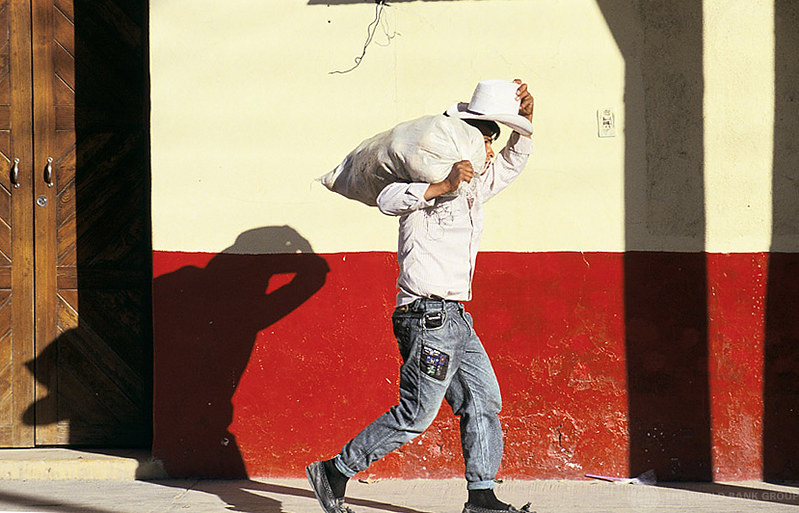
STAY CONNECTED
Additional resources, country office contacts.
This site uses cookies to optimize functionality and give you the best possible experience. If you continue to navigate this website beyond this page, cookies will be placed on your browser. To learn more about cookies, click here .
Mexico’s Floating Gardens Are an Ancient Wonder of Sustainable Farming
Chinampas — an ingenious adaptation to the Valley of Mexico’s lake-filled landscape — could hold lessons for cities around the world.
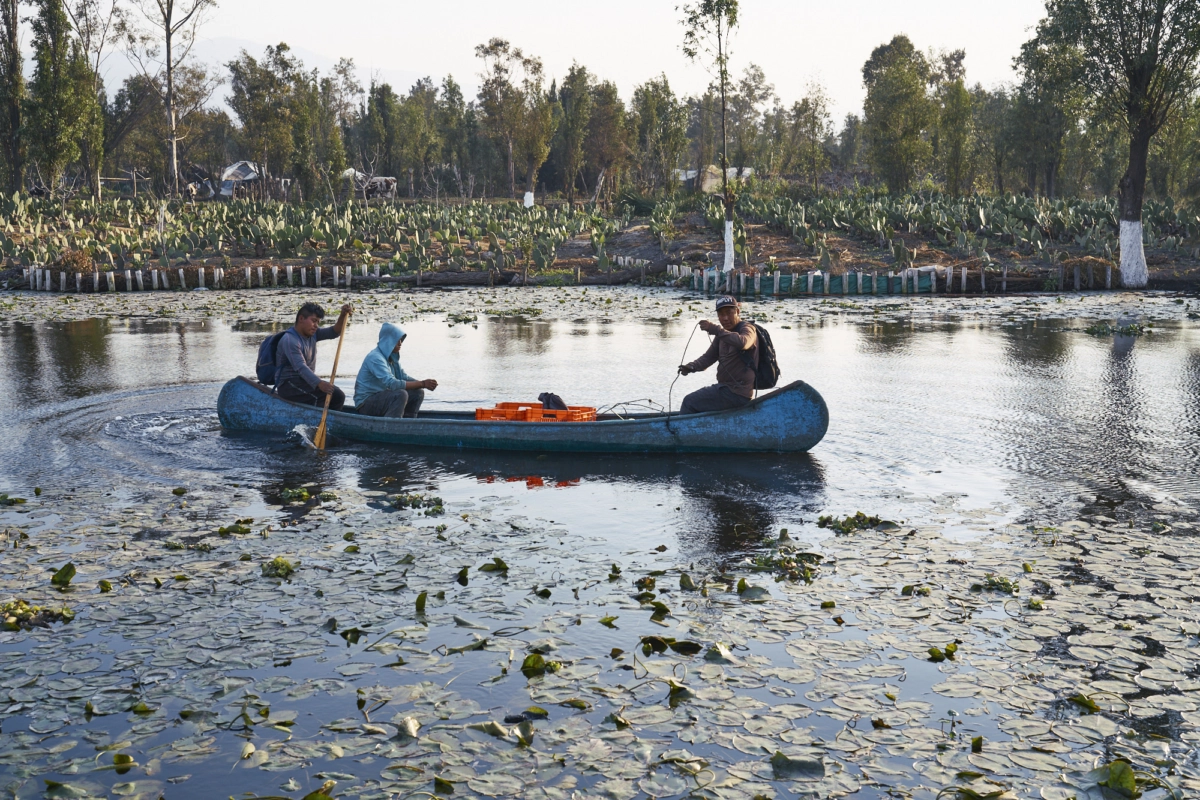
S tanding amid rows of juicy, lime green lettuce and chunky florets of broccoli, Jose Paiz appears as if he could be the owner of a modern, high-tech farm. But the crops thriving here, in the suburbs of Mexico City, are part of a 1,000-year-old tradition.
“My ancestors were doing this before even the [Spanish] Conquistadors arrived in Mexico [in 1519],” says Paiz, while crouching down to pick up a handful of powdery soil from the chinampa , or “floating garden,” on which we are both standing.
These highly productive man-made island-farms, which can be found floating on lakes across the south of Mexico’s capital, date back to the time of the Aztecs or perhaps even earlier — and now proponents say that these ancient engineering wonders could provide an important, sustainable food source as the city faces historic drought.
“My grandparents taught me the methods,” adds Paiz, 32, who is the fifth generation of his family to be a chinampero working in San Gregorio Atlapulco, a traditional working-class neighborhood about 10 miles south of the center of Mexico City.

As a chinampero, Jose Paiz is carrying on a tradition that goes back centuries. Credit: Peter Yeung
Experts say that these chinampas, which have been recognized as a UNESCO World Heritage site, are considered one of the most productive agricultural systems in the world. The artificial islands are built by gathering large amounts of soil from the bottom of the lake and placing it on top of reeds, grasses and rushes in a mass that rises above the water. Farmers then plant a fence of ahuejotes , Mexican willow trees, around the plot to naturally protect against erosion. This system means that the chinampa’s soil is constantly enriched by nutrient-filled sediment flowing in from the surrounding ditches and canals, yielding multiple harvests every year.
“In terms of agriculture, they are one of the best examples of how humans can work with nature,” says Lucio Usobiaga, founder of Arca Tierra , an organization providing local farmers in the area with technical and entrepreneurial support.
One of the first traces of the chinampas dates back to the 14th century, when the Aztecs arrived at the region of what is now modern-day Mexico City. There, they founded the settlement of Tenochtitlán — which would become one of the most powerful cities in all Mesoamerica — in the Valley of Mexico.
But as the Aztecs soon discovered, the valley’s boggy, lake-filled landscape was difficult to cultivate or build on. So they devised an ingenious plan to adapt to the surroundings: the chinampas.
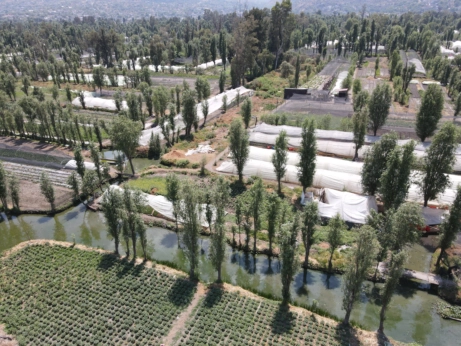
Ahuejotes, Mexican willow trees, are planted around the plots to protect against erosion. Credit: Peter Yeung
A 2013 paper by North Carolina State University professor Matthew Teti found that in the 16th century, chinampa farms could produce 13 times as much crop as dry-land farming in the same area — a system that provided food for hundreds of thousands of people. Chinampas, the study said, are “one of the most intensive and productive agricultural systems ever devised.”
“Aztec planners created these vital waterways as integral to the existence of its cultural, physical, and spiritual, urban identity, rather than draining the water and excluding it from the urban experience,” it continued.
In the case of Jose Paiz, the age-old system is still reaping rewards today. He says that his 7,000 square meters of chinampa, for example, can produce as much as 100 kilograms of broccoli per day — which is sold alongside the yields of fresh herbs, spinach, chard, radishes, corn and kale at local markets in the south of Mexico City.
“I’m proud to be continuing the tradition of my ancestors,” he says.
Meanwhile, according to Arca Tierra, their network of seven producers in the region cultivates over 40,000 square meters of land, employing a total of 27 workers in the field and producing 3,650 kilograms per month. At some farms, as many as 95 varieties of vegetables and herbs are cultivated, underlining the fertility of the method. The production brings in over $4,000 per month in crop sales.

Produce grown on the chinampas is sold at bustling markets in the south of Mexico City. Credit: Peter Yeung
“At the beginning, it was mainly a commercial endeavor to source organic produce close to the city,” says Usobiaga, who supplies restaurants in Mexico City and began working with chinamperos in 2009. “But I learned they are very important in many regards and have historical and cultural importance.”
The design of the chinampas is particularly efficient in its use of water, which it can absorb and retain from the surrounding canals for long periods as well as allowing crops to draw from the groundwater directly, reducing the need for active irrigation.
This could prove hugely valuable for Mexico City and its 22 million residents, since water supplies have fallen to historic lows due to abnormally low rainfall partly attributable to climate change. And lessons learned from the chinampas could potentially help cities around the planet: the UN World Water Development 2024 Report found the number of people lacking access to drinking water in cities will likely reach two billion by 2050.
“The technical aspects of agriculture are innate to every place,” says Usobiaga. “But the way of thinking that created the chinampas, that sensibility, has to be appreciated and valued: To work with the flow of nature, the flow of the seasons. That is what we have to use to get us out of the problem we are in.”
The unique wetlands ecosystem is also home to two percent of the world’s and 11 percent of Mexico’s biodiversity , including the critically endangered axolotl , or Ambystoma mexicanum , an incredible salamander-like amphibian that is able to regenerate every part of its body — even parts of its vital organs such the heart and brain.
Meanwhile, the chinampas also provide a host of other benefits: they filter water, cool the city, sequester carbon, offer green space for locals, and are now a popular destination for tourists who take boats along the picturesque waterways.

Arca Tierra is currently helping to restore the chinampas and training young students in the required skills to cultivate them. Credit: Antoli Studio / Arca Tierra
The value of the chinampas was underlined during the Covid-19 pandemic, when, as the city’s major markets ground to a halt, the chinampas were able to provide healthy, locally-grown food. In some cases, sales more than doubled .
“People began to search for healthier food,” says David Monachon, a social sciences researcher at the National Autonomous University of Mexico who has researched the chinampas as a sustainable food source. “There was this focus on local economy and community. Many people didn’t make this connection before.”
Yet despite their immense value, the chinampas are under threat: rising urbanization means the chinampa landscape is being built on; pollution is dirtying the waters that feed them; younger generations are losing interest in agriculture; and agro-industry is under-cutting the small-scale producers in a price war.
“There are a lot of challenges and problems,” says Monachon, who is supporting a local cooperative of chinamperos to sell their goods via the Mercado Universitario Alternativo , or Alternative University Market. “But chinampas could feed the city.”
Now, only 20 percent of the 2,200 hectares of chinampas are in use, and only about 2.5 percent are being actively cultivated for farming food — the rest is being used for growing flowers and tourism. But Arca Tierra is helping to restore the chinampas — five hectares to date — and is training 15 young students in the required skills to cultivate them — the second, six-month cohort — while also carrying out research on the most effective techniques and productive crops to use on them.
“We have demonstrated that it can be done on a small scale,” says Usobiaga, who believes chinampas have the potential to produce enough of crops like lettuces, herbs and broccoli for all of Mexico City. “But the chinampas need support and investment from the government to scale up production.”

Rosa Garcia sells the produce that she grows on her family’s one-hectare chinampa at Xochimilco market. Credit: Peter Yeung
At Xochimilco market, the largest in the area, there is clear evidence of appetite for a resilient, local food system and signs that this ancient Aztec tradition can still bear fruit. The market bustles with traders and customers, spilling from the covered area out onto the streets.
Rosa Garcia, 47, is rushing around delivering lettuce, spinach, cilantro and broccoli to her 14 clients of the day. The produce, grown at her one-hectare chinampa at San Gregorio Atlapulco, is in high demand. Garcia says that each day her family-run farm can earn as much as 1,000 to 1,500 Mexican pesos ($60 to $90).
“I’ve been doing this since I was a girl,” says Garcia, ticking off the orders as they are dispatched. “It’s a system that works. Why do anything different?”
This article was originally published by Reasons to be Cheerful . Reasons to the Cheerful is a nonprofit online magazine covering stories of hope, rooted in evidence. You can read more from Reasons to be Cheerful here .
This site uses Akismet to reduce spam. Learn how your comment data is processed .
- Environment
- Food & Drink
- Meet the Modern Farmer
Privacy Overview
Necessary cookies are absolutely essential for the website to function properly. This category only includes cookies that ensures basic functionalities and security features of the website. These cookies do not store any personal information.
Any cookies that may not be particularly necessary for the website to function and are used specifically to collect user personal data via analytics, ads, other embedded contents are termed as non-necessary cookies.
With oil funds and Formula One, Saudi Arabia steamrolls its way onto sports’ hallowed grounds

- Show more sharing options
- Copy Link URL Copied!
To understand the scope of Saudi Arabia’s ambitions in the sporting landscape, don’t look just to this spring’s Formula One race in Jeddah — which ended with a predictable one-two win for the Red Bull team. The revealing action was at the after-party.
Amid a bloom of fireworks over Jeddah’s coast, dozens of drones buzzed in synchronicity to spell out the kingdom’s goal: “Saudi Arabia. Home of Sporting Events.”
It’s a vision that increasingly seems within reach. Backed by funds from the state-owned oil giant Aramco and the vast endowment of its Public Investment Fund, the autocratic monarchy has in only a few years steamrolled its way onto the sporting world’s most hallowed grounds.
In soccer, it has lavished its local clubs with hundreds of millions of dollars, courted superstar players to its league and successfully lobbied to host the 2034 World Cup. Its bid to create a rival golf tournament rattled the genteel PGA enough to force it into a reluctant union. Tennis, boxing, cricket, pro wrestling, even eSports — all have been rocked by the sheer scale of investment the kingdom is wielding to transform itself into a sports and entertainment powerhouse.

But it is in motorsports, and Formula One in particular, where Saudi Arabia has made some of its most audacious and expensive moves, outpacing its regional rivals — Bahrain, Qatar and the United Arab Emirates, all host F1 races — amid a wider push to establish the Gulf as a racing hub.
“It’s amazing what they’re doing here,” said Jefferson Slack, commercial and marketing director for Aston Martin Aramco.
“No county in the world is investing in motorsports as much as Saudi Arabia.”
Slack would know. An executive with three decades of experience in sports investments and management of athletes such as Michael Jordan, he joined the team before Saudi Arabia came on board, when Canadian billionaire Lance Stroll bought the defunct Force India Formula One team and rebranded it as Aston Martin in 2021.
Since then, Aramco, the kingdom’s flagship oil company, has plowed money into the team, while the Saudi Public Investment Fund increased its stake in car manufacturer Aston Martin to more than 20%. As of January, Aramco became exclusive title sponsor and is signed on as a strategic partner until 2028. Rumors abound that Aramco may try to buy the team outright.
Critics charge that the massive investments are an attempt at “sportswashing,” calculated to distract from an abysmal human rights record — imprisonment and violence against commentators and activists, travel bans, and male guardianship laws over women.
The kingdom says it is merely modernizing and diversifying its economy, with F1 as an eager partner. Less than two years after Saudi henchmen killed and dismembered a Saudi Washington Post columnist and monarchy critic, the F1 and the kingdom’s flagship oil company entered into a 10-year partnership deal.
The deal, which began in 2020, is believed to have cost the Saudis some $45 million a year. Some whisper it’s only a matter of time before Saudi Arabia bids for the race series franchise as a whole, which Liberty Media Corp. bought for $4.6 billion in 2017 and whose valuation has since risen many times over — in no small part because the Netflix series “Formula 1: Drive to Survive” has supercharged the sport’s international popularity.

In addition, there’s a half-billion dollar racing circuit under construction in the city of Qiddiya, a mega project near the capital, Riyadh, intended to be part city and part tourism, sport and entertainment zone.
Plans are also in place to develop racing at a grassroots level, said Martin Whitaker, head of the Saudi Motorsports Company, the PIF-owned commercial entity charged with bringing motor sport events to the country.
“We’ve raised the bar in how the sport is seen globally,” he said. “Now we have to produce a concrete set of foundations and platforms so we can build it here.”
Creating that sort of ecosystem for racing is harder than it sounds. Soccer for example, can be played just about anywhere: Find an empty lot or quiet street, use whatever is available for goalposts, and that’s largely it.
Racing on the other hand requires infrastructure and major investment. Starting a pipeline of kids in karting — the gateway into circuit racing — can be painfully expensive; move up the ranks to the higher classes and you’re looking at $80,000 a race.

Without serious sponsorship, drivers have little hope of sustaining a career, restricting the sport to what Mercedes driver and F1 superstar Lewis Hamilton (who comes from a working-class background) said in 2021 was a “billionaire’s boy’s club.” Even with that advantage, the odds of getting a seat in an F1 car are astronomical.
One afternoon this spring, visiting journalists were given a tour of a new regulation karting circuit in Jeddah — the first of its kind in the country that could host internationally sanctioned events. The idea, according to Prince Khaled bin Sultan Al-Faisal, chairman of the Saudi Automobile and Motorcycle Federation, was to have many more such circuits across the country, with a focus on drawing children as young as 5.
“We’ve hosted events and championships, but we have to focus on the sport itself and serve its practitioners, and start with a young generation. A circuit like this is the first step,” he said, adding that he was expecting a 15- to 20-year-long timeline before a Saudi F1 driver appears on the grid.
Whitaker, standing nearby, said it wasn’t just about finding drivers of the future.
“It’s engineers, technicians, placing kids with internships with other teams, talking to international teams to base themselves here,” he said.
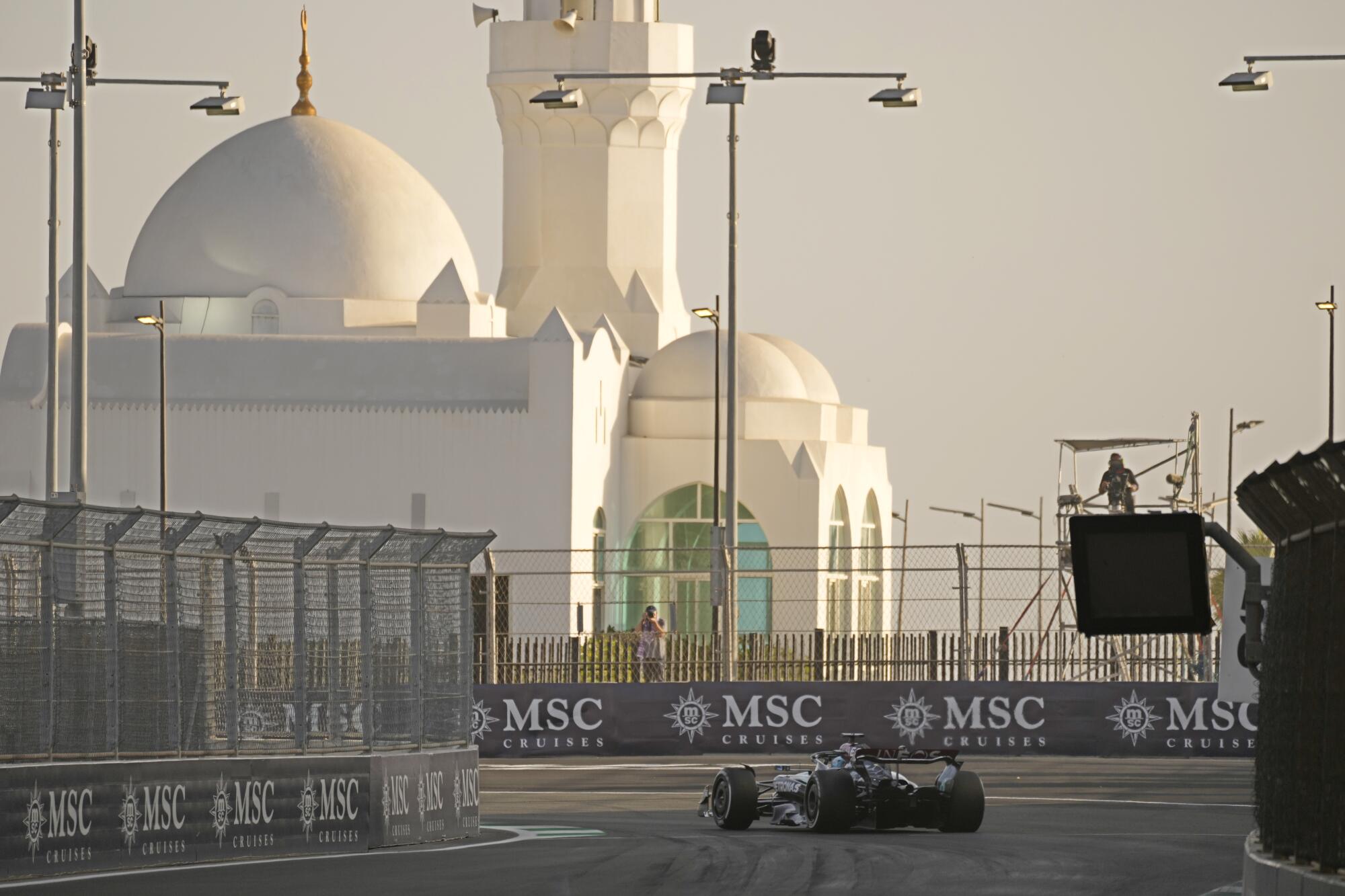
“It’s developing career paths for young people.”
That puts the endeavor in line with Vision 2030, Crown Prince Mohammad bin Salman’s all-encompassing plan to diversify the oil-rich kingdom’s economy and change its reputation from strict religious realm to tourism and sports hot spot, all while providing jobs for young Saudis.
But first you have to get people interested in F1.
Soccer remains far and away the most popular sport in Saudi Arabia and throughout the region, but Liberty representatives have identified the Middle East as one of F1’s fastest-growing markets.
About a third of F1’s roughly 1.55 billion fans worldwide became interested in the sport in the last four years, according to Salesforce data. Meanwhile, analysts at the World Economic Forum predict sport industries in the Middle East to grow by 8.7% in 2026 — more than double the global average.
The region, meanwhile, has gone all-in with Formula One. Races in the Gulf bookend the season — Bahrain in the beginning, Abu Dhabi at the end. The Gulf region is home to four races, the second most after Europe’s nine.
At F1’s top administrative levels you find Emirati former rally driver Mohammed Ben Sulayem heading the Federation Internationale de l’Automobile, or FIA, the sport’s governing body. Bahrain’s Sheikh Abdullah bin Hamad bin Isa Al Khalifa serves as the FIA’s vice-president of sport for the Middle East and North Africa.
Almost anyone who attends an F1 race, if they’re honest, will tell you it’s easier to understand what’s happening if you watch it on TV. But it’s not just about who’s leading the field.
In Jeddah, the rich and connected watch the race from the premium lounge, with a commanding view of the track and “grazing tables” loaded with precision-prepared pastries and concoctions such as caviar cheesecake. Extra perks include traversing the pit lane as the teams prepare or paddock access, all the way up to meet-and-greets with F1 ambassadors. The price tag on that sort of package? $13,999.
In the cheap seats — which at a cost of at least $200 for a three-day pass are hardly cheap and allow only the occasional glance at the cars as they scream by — the fans didn’t seem to miss the caviar cheesecake.
Before the Jeddah race, a DJ bounced among fans, riling up the crowd with impromptu quizzes or throwing F1 merch, and some of the drivers passed by and signed shirts. Above, the Saudi Falcons, the country’s jet aerobatics team, roared back and forth over the circuit.
Even in the stands farther from the track the sound of an F1 car is a multisensory affair: speed takes on physical proportions, the engine roar passes through your body.

“My friends and I are really into it. In my community, at least, there are a lot of F1 fans,” said Sireen Fataani, a 16-year-old wearing a Ferrari jacket. Beside her was Ibaa Qattan, also 16, and her sister, Shumookh Qattan, 22.
The three were walking around the pit lane after one of the non-F1 races at the track that weekend, gazing at the cars and hoping to catch a glimpse of some of their favorite drivers — McLaren’s Oscar Piastri for Sireen, Mercedes’ George Russell for Ibaa, and McLaren’s Lando Norris for Shumookh.
“I wanted something to be obsessed about one summer, and for me it was F1,” Ibaa said.
She insisted she didn’t get into it because of “Drive to Survive.” “Too much drama,” she said dismissively.
Both of the teens were enrolled in “F1 in Schools,” an Aramco-sponsored program that has students establishing and managing their own racing team as part of STEM and other lessons. Ibaa had taken on the role of head engineer for her team, while Sireen was doing marketing.
“Ours is called Fennec,” she said. “It’s a desert fox that lives in Saudi Arabia.”
Not everyone is convinced that the region’s plans to build up its racing bonafides are a good thing.
There have been grumblings over how the infusion of Gulf money has changed F1. Hosting a race is prestigious and a calling card for countries, but the high fees — Saudi Arabia pays an estimated $55 million for the honor — mean storied tracks in Europe (where the most die-hard fans reside) have to compete in ways they didn’t before, and without the coffers of a petrostate backing them up.
Aside from the fees, tracks such as Belgium’s Spa have been forced into upgrades and expensive face-lifts or risk being dropped from the F1 calendar.
Corruption charges have also been leveled at the FIA’s leadership under Ben Sulayem. He was accused in March of trying to block the Las Vegas circuit from being certified ahead of last year’s Grand Prix. That followed a previous accusation that he had interfered in the 2023 Saudi Arabia Grand Prix in favor of Aston Martin. The FIA’s ethics committee cleared him of both charges.

And then there are the accusations of sportswashing, as wealthy nondemocratic countries try to lure more sporting events to the Gulf.
During the last soccer World Cup, host Qatar, which had already bought the French team Paris Saint-Germain, was accused of trying to launder its repressive reputation. The monarchy’s human rights record and labor rights nevertheless edged into the spotlight.
Saudi Arabia’s efforts in soccer, Formula One and golf, among other sports, have kicked up similar criticism as Saudi money has continued to flow.
“The leaders of these autocratic nations strategically utilize sports, leveraging major events such as Formula One to operate beyond the conventional political stage,” said Stanis Elsborg, a Danish researcher with Play the Game, an initiative to promote democracy and transparency in international sports.
“While immediate changes may be subtle, the long-term ownership by an autocratic state poses substantial threats to the sport’s integrity and introduces conflicts of interest.”

Others allege that Saudi Arabia is leveraging its influence on F1 officials to have them lobby governments to weaken legislation that curbs usage of internal combustion engines and fossil fuels.
“If your goal is to diversify into other industries, it’s a little inconsistent that your sponsorship is all about the oil business,” said Frank Huisingh, founder of Fossil Free Football, a campaign organization that aims to remove high-polluting companies from soccer sponsorship.
“They need to work on their image to keep selling a product that is becoming very unpopular but also because they’re a country with a bad reputation for both human rights and climate reasons.”
In an interview with Fox News in September, Bin Salman dismissed such accusations, insisting his main concerns are domestic growth.
“If sportswashing is going to increase my GDP by way of 1%, then I will continue doing sportswashing,” he said.
“I don’t care... I’m aiming for another one-and-a-half percent. Call it whatever you want, we’re going to get that one-and-a-half percent.”
In that same interview, Bin Salman expressed shame at the country’s repressive laws, but said that dozens of laws had been amended and that he was “trying to prioritize the change day by day,”
“Do we have bad laws? Yes. Are we changing that? Yes,” he said.
F1 portrays its involvement in Saudi Arabia and the Gulf in general as a driver for that change. During the race weekend, F1 Academy, an all-women’s race series and training program run by Scottish former racing driver Susie Wolff, had its season opener in Jeddah. Wolff called the event “iconic.”
“I think to open here in a country where just six years ago women couldn’t drive really shows incredible progress,” she said at a panel on sports’ role in Saudi Arabia.
“Sometimes in life, you have to see it to believe it. And we are out there to show that this sport wants to provide opportunity to women and wants to make the sport more diverse in the long term.”
Drivers were also encouraging.
“We are not going to change the world at the end of the day as a sport, but we try to share positive values. And then, of course, it’s also up to the country to make positive changes,” Max Verstappen said at a post-race news conference. The Belgian-Dutch Red Bull driver added that he had already seen change in the kingdom and that it was a “work in progress.”
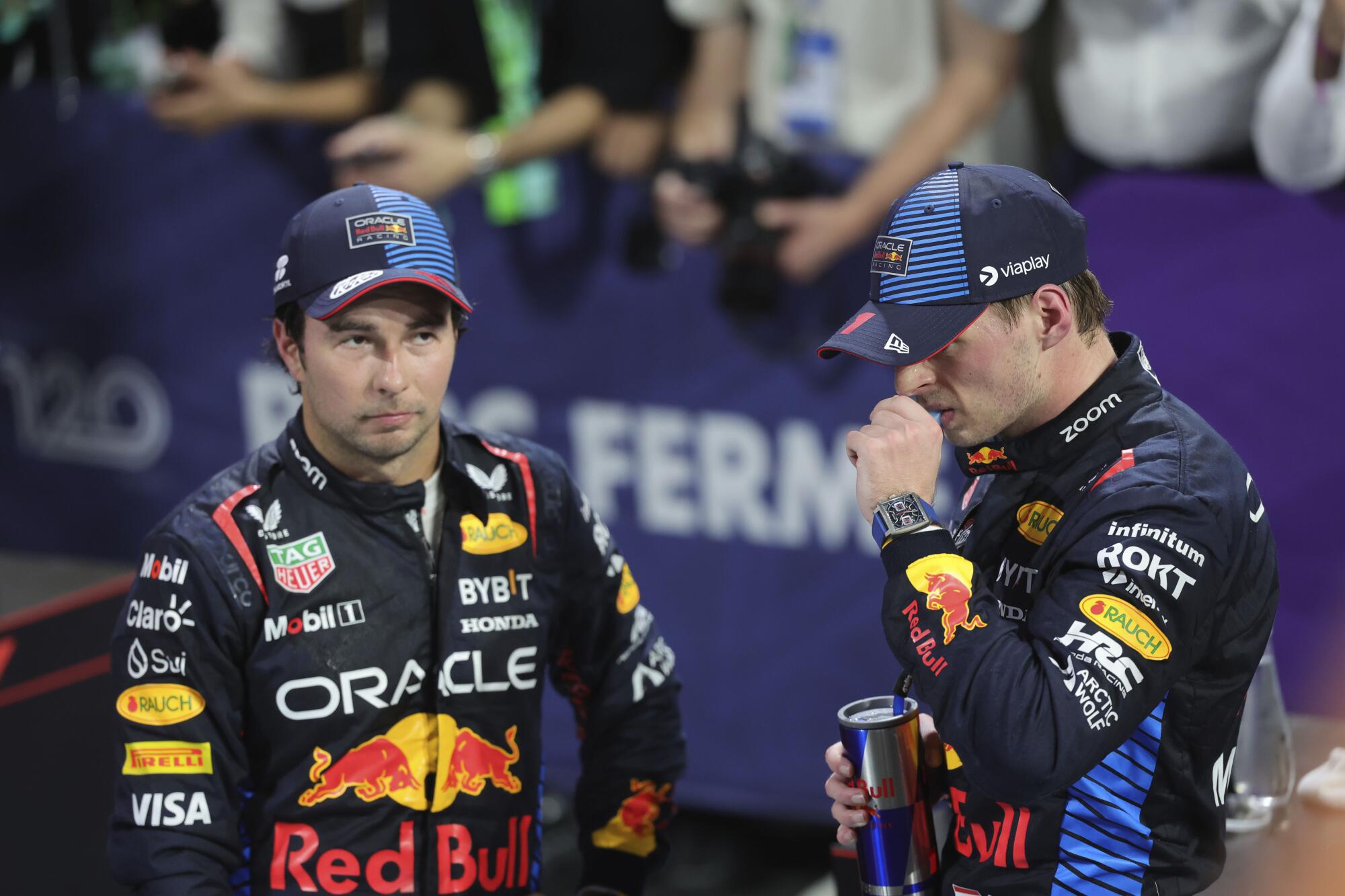
Ferrari driver Charles Leclerc, who is from Monaco, said F1 needed to go to different countries “in order to hopefully open minds.” Red Bull driver Sergio Pérez said it was important to expand beyond its traditional areas.
“I feel like in the past, Formula One was very centralized in Europe, not just with drivers, but also the people working in the paddock,” said Pérez, who is from Mexico, adding that now there were more nationalities at different levels of the sport.
Some in the Gulf are already on the yearslong journey to score a place on the F1 grid.
Sisters Amna, 24, and Hamda Al Qubaisi, 21, started karting in their home country of the United Arab Emirates as children with their father’s encouragement and are now part of F1 Academy. In 2021, Hamda became the first woman to win a podium finish in the history of the Italian F4 series.
When they started competing in races, they’d hear grumblings and anger from the Gulf region.
“In the beginning people were very unsupportive. They didn’t like the fact there was a girl competing in a male-dominated sport. We’d hear ‘Women belong in the kitchen. Women aren’t supposed to be playing a sport, they should focus on studies or something else,’” Amna Al Qubaisi said.
Now “everything switched, and people are happy and supportive of what we’re doing,” she added.
Their racing careers have encouraged other women and girls, Hamda Al Qubaisi said. “They tell their father ‘Amna and Hamda are racing,’ and then he says ‘Why not?’”
“Every time we go back to visit our karting team, we’re seeing it grow more and more with girls from the Middle East, which makes it even more special.”
When Saudi Arabia’s first female racer, Reema Juffali, 32, got her first regular driver’s license while studying in the U.S. in 2010, women in the kingdom weren’t allowed behind the wheel.
Seven years later, King Salman, Bin Salman’s father, issued a decree overturning the ban on women driving. That same year, Juffali — then working a finance job in the U.K. — got her racing license, the first Saudi woman to do so. She made her professional debut at the TRD 86 Cup in Abu Dhabi in 2018 — the same year the kingdom began issuing driver licenses to women.
Nearly six years later, Juffali sped through the turns in front of a home city crowd in the first F1 Academy race in Jeddah, also a significant and emotional milestone for her.
“I’ve been wanting to be able to share what I do with my friends, family, fans, people who have never really been able to come to my races,” she said.
But while there is progress on the track and some restrictions against women have been eased to much fanfare, women in Saudi Arabia are far from enjoying equal rights. Under the patriarchal government, women need a male guardian’s approval to get married or divorced. They are required by personal status laws to obey their husbands, and the law places fathers as the default guardians for children, among other limitations on women.
And though women are now able to drive, one activist who campaigned to overturn the driving ban is still caught up in Bin Salman’s crackdown on dissent.
Loujain al-Hathloul, who was imprisoned from 2018 until 2021, remains barred from leaving Saudi Arabia. Manahel al-Otaibi, 29, another women’s rights activist who had spoken in favor of Bin Salman’s reforms but called for more change to the male guardianship laws, was sentenced in January to 11 years for what the government labeled “terror offenses.”

Though Juffali acknowledges the criticism of her country, she says people need to come to Saudi Arabia and see the changes happening themselves.
“We’re not just advancing on sports, which speaks to me personally, but also to see young people who are so much more ambitious, so much more hungry and happy — I feel that when I’m here,” she said.
Juffali aims to boost Saudi participation in racing through the team she founded, Theeba Motorsport, named for her childhood nickname, which roughly translates as “she-wolf.” She hopes Theeba will become the first Saudi team to compete in the 24 Hours of Le Mans.
“The aim is to one day be a Saudi team — not just drivers, but mechanics, engineers, for all facets of the team be Saudi,” Juffali said.
“These events we have, they’re for Saudis as well. This is serving a bigger purpose than anyone realizes.”
More to Read

‘Dragon Ball’ theme park set to open in Saudi Arabia
March 22, 2024

NASCAR’s Mexico Series makes a stop at the L.A. Coliseum in first U.S. race since 2015
Feb. 3, 2024

In 2023, the Saudis dove further into sports. They are expected to keep it up in 2024
Dec. 23, 2023
Start your day right
Sign up for Essential California for news, features and recommendations from the L.A. Times and beyond in your inbox six days a week.
You may occasionally receive promotional content from the Los Angeles Times.

Nabih Bulos is the Middle East bureau chief for the Los Angeles Times. Since 2012, he has covered the aftermath of the “Arab Spring” revolution as well as the Islamic State’s resurgence and the campaign to defeat it. His work has taken him to Syria, Iraq, Libya, Turkey, Lebanon, Jordan and Yemen as well as on the migrant trail through the Balkans and northern Europe. A Fulbright scholar, Bulos is also a concert violinist who has performed with Daniel Barenboim, Valeri Gergyev and Bono.
More From the Los Angeles Times

World & Nation
A wild orangutan used a medicinal plant to treat a wound, scientists say
May 2, 2024

Ex-Dodger Jayson Werth has a horse in the Kentucky Derby. It took him just two years

Litman: The Trump prosecution has a Michael Cohen problem — and a plan to solve it

Suspect in London sword attack appears in court on murder charge in death of teenage boy

IMAGES
COMMENTS
30 Jun 2021. The Secretary-General of the World Tourism Organization (UNWTO) has embarked on a first official visit to Mexico. The visit of the high-level delegation further emphasises the unprecedented level of political support for tourism across the Americas as governments recognize the sector's unique ability to drive economic and social ...
It invites the entire value chain of the sector including governments, companies, civil society, communities, universities and international cooperation to re-think, re-signify and re-design the paradigms of tourism activity in Mexico and Latin America. Reimagining tourism, measuring differently, having a long-term vision, solving challenges ...
Published by Publimetro México on October 1, 2023. Mexico has once again demonstrated its prowess in the global tourism industry, securing recognition from the United Nations World Tourism Organization (UNWTO). On September 27, during World Tourism Day celebrated in Riyadh, Saudi Arabia, UNWTO Secretary-General Zurab Pololikashvili commended ...
International tourism, number of arrivals - Mexico World Tourism Organization, Yearbook of Tourism Statistics, Compendium of Tourism Statistics and data files. License : CC BY-4.0
The World Travel and Tourism Council (WTTC) recently announced a US$2.5 billion investment in tourism infrastructure in Mexico. Yucatán is also receiving investment from other sources. Mauricio Vila Dosal, Governor of the state, announced an investment of over US$73 million in tourism projects, reported MBN. Photo by: Michelleraponi.
International tourism continues to outpace the global economy. 2. Driven by a relatively strong global economy, a growing middle class in emerging economies, technological advances, new business models, affordable travel costs and visa facilitation, international tourist arrivals grew 5% in 2018 to reach the 1.4 billion mark.
The Permanent Tourism Observatory is a channel of communication with 169 Mexican representations abroad, 85 embassies, 73 consulates and 3 liaison offices around the world. It is available to the state tourism ministries, and has the invaluable support of the Association of Tourism Secretaries of Mexico (Asetur), headed by Nayarit Tourism ...
Mexico City, Mexico, July 5, 2021 / TRAVELINDEX / The Secretary-General of the World Tourism Organization (UNWTO) has embarked on a first official visit to Mexico. The visit of the high-level… Publisher - Authoritative News Agency Focusing on Global Travel
As such, international tourism can generate a tourism trade surplus when receipts exceed expenditure, or a deficit (vice versa) in the travel balance of countries. In 2019, the United States of America had the world's largest travel surplus with USD 62 billion, resulting from tourism receipts of USD 214 billion and expenditure of USD 152 billion.
International tourist arrivals (overnight visitors) reached a total of 1,235 million in 2016. This was 46 million more than in 2015, or an increase of 3.9%. The global pace of growth was slightly more moderate than in 2015 (4.5%), but in line with UNWTO's long-term forecast of 3.8% per year for the period 2010 to 2020.
Mexico has traditionally been among the most visited countries in the world according to the World Tourism Organization, and it is the second-most visited country in the Americas, after the United States. In 2017, Mexico was ranked as the sixth-most visited country in the world for tourism activities.
MEXICO CITY, Mexico, August 27, 2017. - The United Nations World Tourism Organization (UNWTO) released its 'UNWTO Tourism Highlights 2018 Edition', which includes the 2017 global ranking. The document confirms that Mexico rose to sixth place in the ranking of most visited countries after welcoming 39.3 million visitors in 2017.
UN Tourism (UNWTO until 2023) is a specialized agency of the United Nations which promotes responsible, sustainable and universally-accessible tourism.Its headquarters are in Madrid, Spain.Other offices include: a Regional Support Office for Asia and the Pacific in Nara, Japan and a Regional Office for the Middle East in Riyadh, Saudi Arabia.. UN Tourism serves as a global forum for tourism ...
Name Change Reaffirms Global Leadership (Per a Press Release dated January 24, 2024) The World Tourism Organization (UNWTO) entered a new era in 2024, unveiling its new name and brand: UN Tourism.With this new brand, the organization aims to reaffirm its status as the global tourism leader for development, driving social and economic change to ensure that "people and planet" are always ...
Mexico: 38.3 million: 31.9 million: 20: 31.2 7 ... The World Tourism Organization reports the following destinations as the top ten tourism earners for the year 2022, with the United States by far the top earner. Rank Region International tourism receipts (US$ billion)
About Us. The World Tourism Organization (UN Tourism) is the United Nations agency responsible for the promotion of responsible, sustainable and universally accessible tourism. As the leading international organization in the field of tourism, UN Tourism promotes tourism as a driver of economic growth, inclusive development and environmental ...
According to the first edition of the World Tourism Organization (UNWTO) Barometer on World Tourism 2023, international tourism to Mexico has increased by 13%. It was only surpassed by Romania ...
Membership of regional trade agreements and preferential trade agreements. See the RTAs gateway for explanations and background. MEMBER INFORMATION: Mexico and the WTO - This page gathers key information on Mexico's participation in the WTO. Mexico has been a WTO member since 1 January 1995.
World Tourism Barometer: January 2023. International tourism recovers 63% of pre-pandemic levels in 2022. By. root - 2023-01-27. 0. 5015. Facebook. Twitter. ... WORLD TOURISM ORGANIZATION Calle Poeta Joan Maragall 42 28020 Madrid, Spain info★unwto.org please replace ★ with @ RSOAP A to Z. RSOAP;
Tourism Statistics. Get the latest and most up-to-date tourism statistics for all the countries and regions around the world. Data on inbound, domestic and outbound tourism is available, as well as on tourism industries, employment and complementary indicators. All statistical tables available are displayed and can be accessed individually ...
The Mexican economy grew by 3.2% in 2023, the second consecutive year of growth exceeding 3%, a moderation after the post-pandemic rebound. The official multidimensional poverty rate fell from 43.9% in 2020 to 36.3% in 2022, lifting 8.8 million Mexicans out of poverty, although extreme poverty has decreased more slowly.
The consultancy firm Gemes reports that, in February 2024, the four airports that recorded the largest influx of foreign tourists were Cancun, Mexico City, Puerto Vallarta and Los Cabos. These are the percentage increases reported compared to 2023: Cancun — 10.7 percent. Mexico City — 2.4 percent. Puerto Vallarta — 14 percent.
S tanding amid rows of juicy, lime green lettuce and chunky florets of broccoli, Jose Paiz appears as if he could be the owner of a modern, high-tech farm. But the crops thriving here, in the suburbs of Mexico City, are part of a 1,000-year-old tradition. "My ancestors were doing this before even the [Spanish] Conquistadors arrived in Mexico [in 1519]," says Paiz, while crouching down to ...
The UNWTO Elibrary is an online service from the World Tourism Organization (UNWTO) with a broad coverage of tourism and related subject areas. The UNWTO Elibrary is an information source offering an unparalleled coverage of research and information in the area of tourism and available to our Member States, Affiliate Members, subscribers and general public.
College campuses across the United States have erupted with pro-Palestinian protests, and school administrators are trying — and largely failing — to defuse the situation. Tensions on US ...
Less than two years after Saudi henchmen killed and dismembered a Saudi Washington Post columnist and monarchy critic, the F1 and the kingdom's flagship oil company entered into a 10-year ...